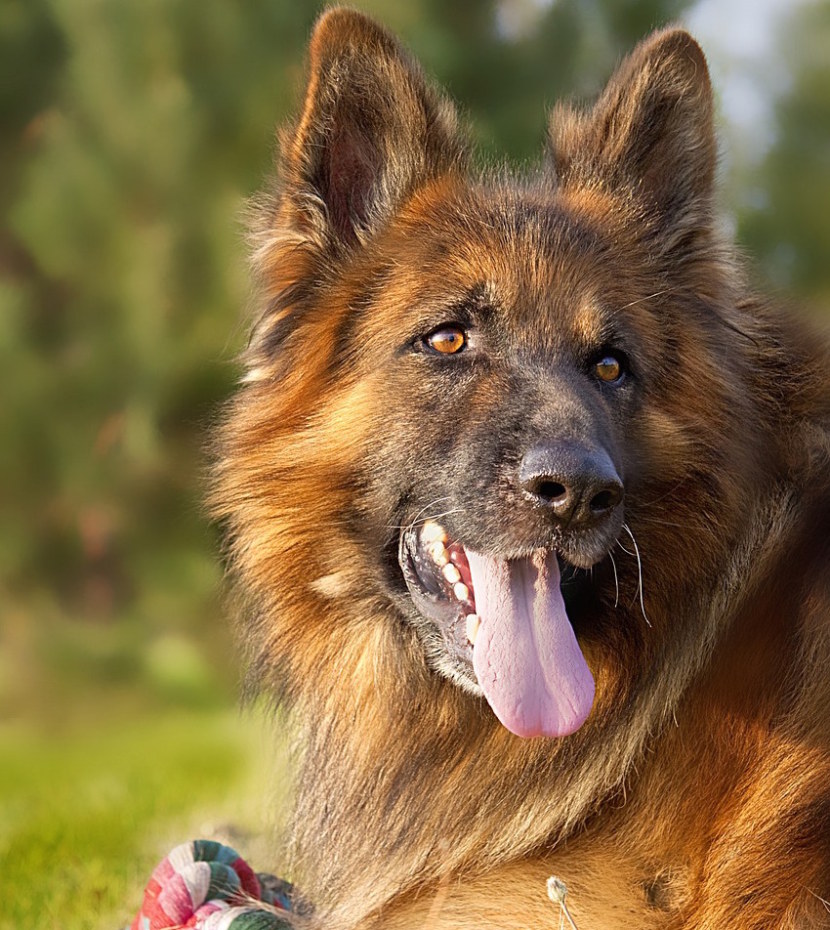You’ve planned an awesome hike in the mountains that’s sure to tire your dog out! But what if it rains? Or you sprain your ankle? And you’re stuck in a hotel room.
Maybe you live in a small space, like a boat, RV, or New York City apartment. When your square footage is limited, getting creative will help your dog burn off energy.
So, can you exercise your dog indoors—even in a small space? You bet!
* This post contains affiliate links. Thank you! *
We live on a boat that is ten feet wide at the broadest part. And we have a Golden Retriever. Since we’re not always hanging out on a cool beach, we’ve found ways to tire out a dog in a small space. Even if you’re not a sailor, you can make use of the same skills!
Our bluewater sailboat is narrow so you’re never far from a handhold. But it’s also too narrow for a golden retriever to turn around in the aisle.Whether your small space is an apartment, hotel room, adventure van, RV, or vacation rental, you’ll have enough space to tire out any dog.
Here’s what you need to know:
The key to a happy and tired dog is being a creative owner!
11 Ways To Tire Out A Dog In A Small Space
These are some of the best ways we’ve found to work your dog’s body and brain indoors:
Do you keep your dog’s same old toys hanging around all the time? Stop it! Your dog will show much more interest in playing with toys that are new to her.
You don’t need to spend money on new toys all the time. Just hide the ones she hasn’t paid attention to for a while and then surprise her with them a few weeks later.
Just hide the ones she hasn’t paid attention to for a while and then surprise her with them a few weeks later.
If she’s an enthusiastic toy lover (like our Honey), she’ll do a good job of tiring herself out just by jumping around with her long, lost toy.
Pro tip: Add “Hide dog toys” to your trip planning to-do list a week or so before leaving on vacation. Then pack the toys your dog has been missing for your trip.
READ MORE ⇒ How To Take A Cross Country Trip With PetsHoney’s favorite bear has been hidden away for two weeks. As soon as we put it in reach, she sought out her old friend.Our boat is too small for this game. But it’s a favorite when we get to shore.
Wait until your dog is distracted by a treat, person, or ball. Then slip into a closet or duck behind a piece of large furniture. If your dog doesn’t come looking for you right away, call her name. Make a big fuss and give her a treat when she finds you.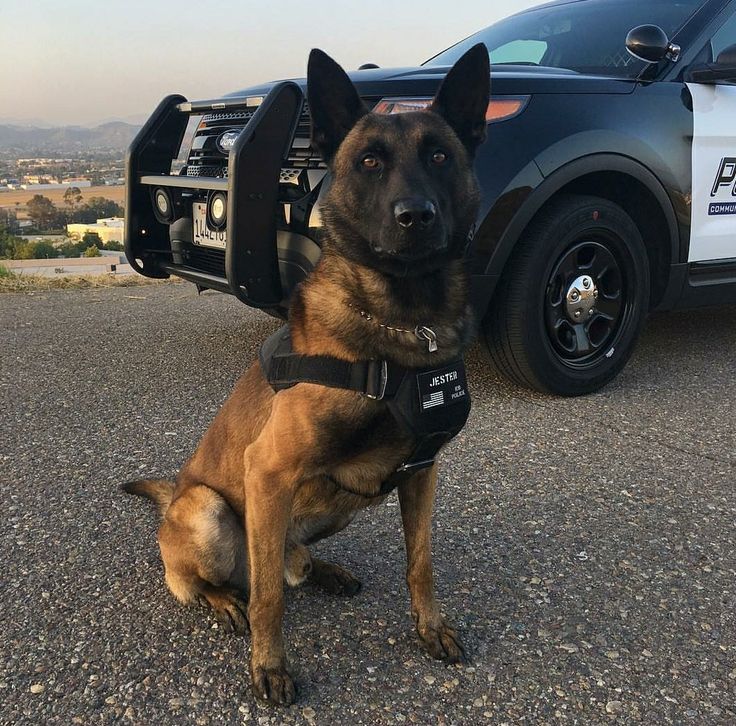
This game also comes in handy if you have trouble getting your dog to come back at the dog park!
There are tons of ways to tire your dog out with an obstacle course. You can place tape across a doorway to create jumps for your dog to go over or limbo bars for him to go under.
Pro Tip: Pack a roll of blue painter’s tape in your dog’s travel gear to use in hotels and vacation properties.
You can also rearrange the furniture for them to wind around. Have them jump up on and off the couch and other furniture if it’s allowed. Remember to be respectful – not all lodgings want pets on the furniture.
All of our furniture on the boat is pet friendly. So we use Honey’s favorite stuffed toys to encourage her to jump on and off the settees and climb the first few steps of our ladder.
We can’t move furniture around on the boat. But there are plenty of obstacles for Honey to jump on and off.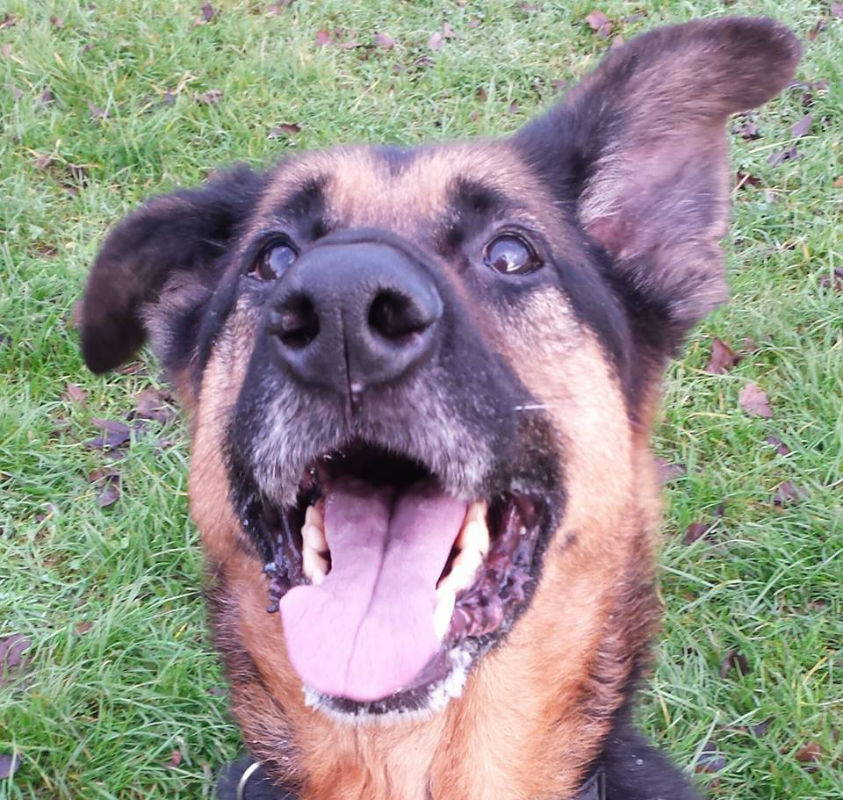
To play the shell game you’ll need a few extra-smelly treats and two cups. Show your dog the treat and let her watch you put it under one of the two cups.
Switch the cups once or twice and ask your pup to find the treat. Most dogs will knock over the cup hiding the treat.
As your dog learns the game, make it more difficult. You can add a third cup, use a milder smelling treat, or spend more time moving the cups around.
C’mon, Honey, make your choice. Which cup is hiding the treats?
Dogs with a strong prey drive love chasing bubbles. Just whip out your wand and let your dog pop bubbles until she’s tired!
Make sure you use a bubble mixture that won’t hurt your dog’s eyes. You can get bacon-scented or peanut butter-scented bubbles (yes, really!). Or make your own – which is less interesting, but safe – using glycerin and water.
Pro Tip: If you need your pup to be entertained while you’re on a conference call, the automatic bubble blower is a good investment!
 Feed Your Dog Using A Food Toy
Feed Your Dog Using A Food ToyIf your dog has to work to get her food, the effort will tire her out and keep her from gobbling down her meal at the same time.
We’ve been feeding Honey out of food toys since she was 8-weeks old. Her first was a plastic bottle balanced on its opening. We’d put her kibble inside, balance the bottle on its neck, and encourage her to knock it over with her nose. While she was eating what fell out, we’d set the bottle up again.
From there she graduated to more advanced toys, including the Kong Wobbler which requires her to work the toy all over the room to get her full meal.
The result of feeding Honey from food toys? She takes a deep nap immediately after eating.
If you’re concerned about the noise your dog might make while playing with the KONG Wobbler, try a snuffle mat instead.
And, if your dog is particularly clever, get a food puzzle that makes them solve problems to release their food.
The mental energy required by food toys paired with the arousing scent of food stimulating the brain will tire your dog out faster than a long romp at the dog park!
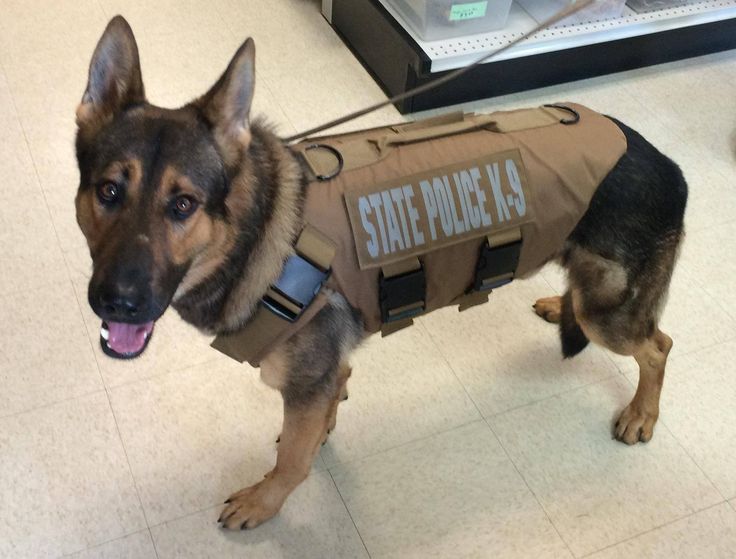 Play Fetch
Play FetchSome dogs love to fetch. But it’s not always convenient to take them outside. Don’t worry, fetch is also a great game inside. If you don’t live in a museum, that is.
We’ve played fetch on the stairs, using toys that make weird bounces like a Kong Wubba. Using the stairs for a game of fetch keeps the game contained while forcing your dog to run up and down — using more energy.
Honey loves playing tug, and the Kong Wubba works great for this, too! My husband also gets down on the ground and wrestles with Honey. They both enjoy a little roughhousing, as long as it’s under control.
If your dog gets overexcited with this kind of game, you might want to avoid it. But for some dogs, rolling around on the floor with their favorite person is loads of fun.
Nothing works your dog’s brain better than training. And teaching her to do tricks is fun for you both!
Shaping is a training method in which you reward your dog for getting closer to a behavior, one tiny step at a time. For example, to train your dog to shut the door, say yes and give him a treat if he faces the door. Once he’s reliably facing the door to receive a reward, wait for him to move closer to the door before giving him a treat. Work your way through the steps until your dog is touching, and then pushing the door with his nose for a reward.
For example, to train your dog to shut the door, say yes and give him a treat if he faces the door. Once he’s reliably facing the door to receive a reward, wait for him to move closer to the door before giving him a treat. Work your way through the steps until your dog is touching, and then pushing the door with his nose for a reward.
The best part is, you’ll never run out of things to teach your dog!
READ MORE ⇒ Training Your Dog To TravelOne of Honey’s favorite tricks is “high five.” And learning it really tired her out.We took a great class on playing nose work games at our local SPCA and Honey LOVED it. Now we use nose work games to tire her out when we’re stuck on board the boat in bad weather.
When she hears me say, “Find it,” Honey knows to start sniffing out the treats I’ve hidden around the boat. Using her nose tires her out better than anything else we do.
You have to train your dog to understand what you want him to do when you give the command, “Find it.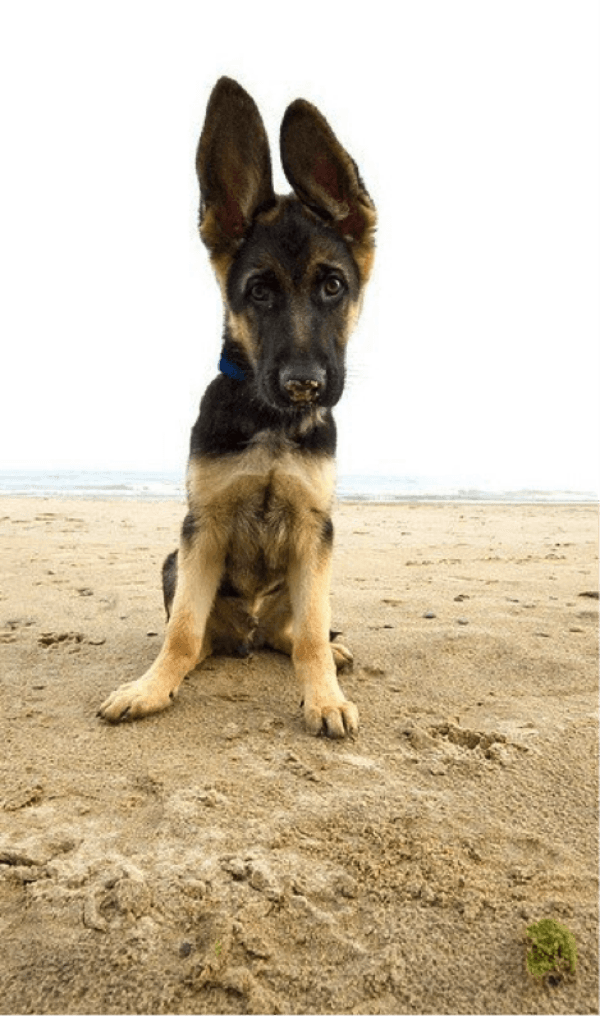 ” But it’s worth the effort because nose work is a fun way to tire out your dog no matter where you are.
” But it’s worth the effort because nose work is a fun way to tire out your dog no matter where you are.
Honey loves soft, stuffed toys with a squeaker. But in a pinch, a crinkly water bottle inside a sweat sock tied in a knot is a fun substitute. (And it gives you a way to use unpaired socks that come out of the dryer!)
For some reason, most dogs go crazy for the sound of a crinkly water bottle. And the crunch, crunch, crunching is a great way to tire out your dog.
You can also make your own “chews” by mixing up a dehydrated dog food like the The Honest Kitchen, stuffing it in a West Paw Zygoflex Tux toy and freezing it overnight.
Get $10 Off (affiliate link) Your First Order
Of $20+ at HonestKitchen.com
Hopefully, you’ll find at least a few of these ideas work well to tire out your dog out the next time you’re stuck indoors.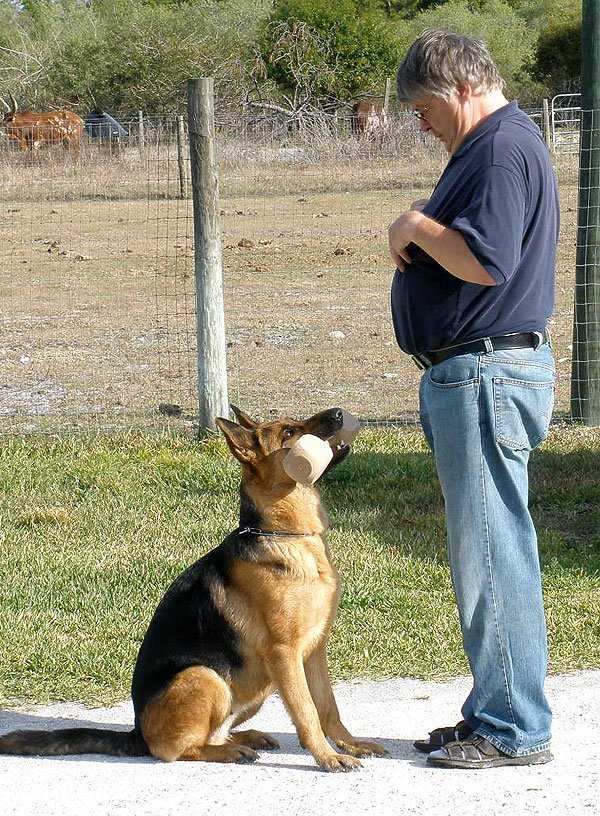
Most of all, keep it fun! You might find that your dog is as happy to hang out inside with you as he is to roam the mountains or go swimming on a beach.
Amazon Affiliate Disclosure: GoPetFriendly.com LLC is a participant in the Amazon Services LLC Associates Program, an affiliate advertising program designed to provide
a means for website owners to earn advertising fees by advertising and linking to amazon.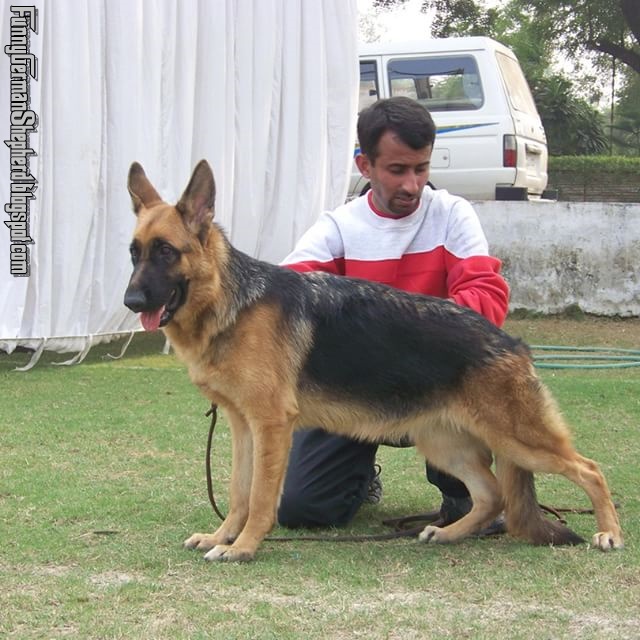 com, audible.com, and any other website that may be affiliated with Amazon
Service LLC Associates Program. As an Amazon Associate, the owner of this site earns a commission from qualifying purchases.
com, audible.com, and any other website that may be affiliated with Amazon
Service LLC Associates Program. As an Amazon Associate, the owner of this site earns a commission from qualifying purchases.
(Visited 380,226 times, 1 visits today)
Do you want to learn how to exhaust a German Shepherd to tire them out so you can stop feeling worn out and stressed?
It might feel like a well-kept secret guarded by famous dog trainers, but it’s not!
So, how do they do it?
They use essential dog skills, which you can learn easily right here.
Now, take a moment to imagine this: the next time you sit down to read your favorite book, you’ll be armed with tools to make your dog calm down so you can get a bit of peace and quiet.
Think I’m exaggerating?
Below, I will show you exactly how to exhaust a German Shepherd (even a puppy) to not only tire them out…
But to calm them down, too.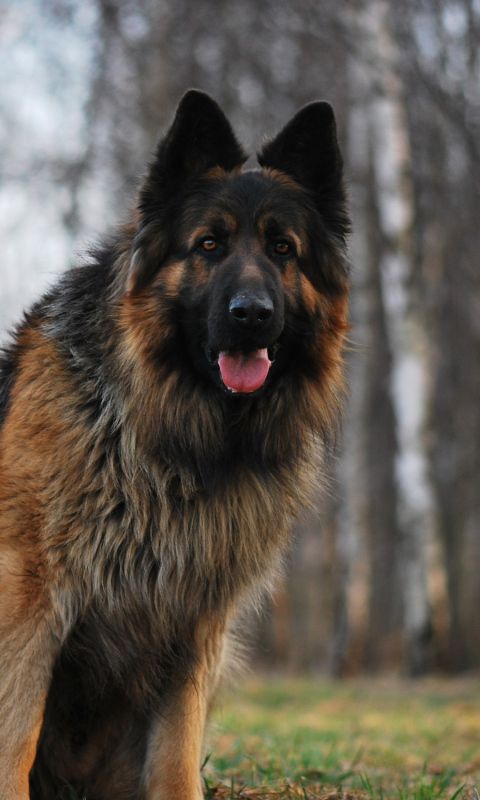
As much as you adore your German Shepherd and laugh at their silly play, you’re probably not particularly fond of their high-energy destructive behavior — especially at inappropriate times.
While most German Shepherd puppies will outgrow their hyper behavior, adult German Shepherds will most likely still maintain a high energy level that you’ll need to learn how to channel into more calming activities.
German Shepherds have one of the highest exercise needs and are considered not only athletic but highly intelligent. These two traits coupled together make for a breed that may seem hyper and overactive. Some might even refer to their dog as having ADHD.
Most likely your German Shepherd isn’t hyper or overactive. Instead, they probably need a more creative daily routine to help them meet their breed-specific needs.
Let’s see how you can do that!
Can you teach your German Shepherd how to be calm?Calm is hard to train a German Shepherd to perform on command.
I know you feel overwhelmed with your dog right now, but please remember they’re a working breed living in your modern, more sedentary, world. They most likely won’t respond immediately to your attempts to calm them down.
Being calm is a learned behavior that takes time to master and requires daily interaction and ongoing training to perfect. Don’t punish them or use harsh discipline, because this will elevate their energy levels and they won’t understand what they’ve done wrong because they don’t have an alternative calming behavior.
It’s YOUR job to teach your German Shepherd how to use up their energy in productive ways, so they can relax and be calm later when you need them to.
Here’s how to train calmness and exhaust a German Shepherd to tire them out the right way.
How to Exhaust a German ShepherdLearning how to tire out and exhaust a German Shepherd is a process that you can learn.Putting together an effective calming routine for your hyper German Shepherd isn’t impossible (in fact, it’s far from it).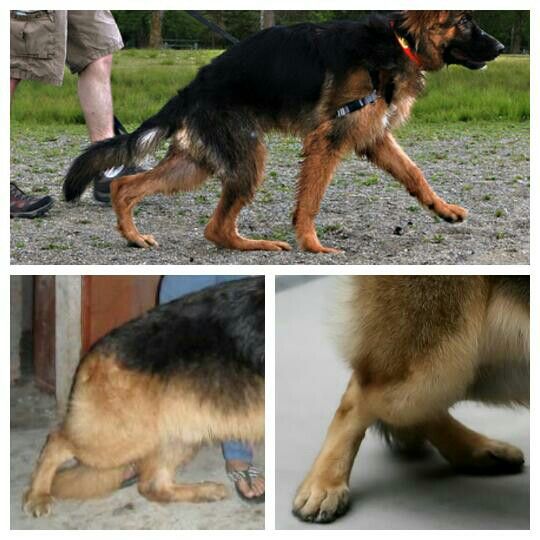 But it does require time, effort, and grit.
But it does require time, effort, and grit.
Stick with the program for a few months to see the best effects.
Exhausting a working breed dog is quite a feat, but you can teach them how to release their energy in more productive ways that don’t drive you mad.
Step 1: Don’t just focus on the daily walks.Only meeting the minimum for your German Shepherd’s exercise needs can spell disaster at home.I’m sure you already know that German Shepherds require 2 hours of exercise a day. But your daily walks aren’t enough for this fast-paced, high-drive breed.
You’ll need to rethink your exercise routine and understand more about your German Shepherd’s breed history.
Your German Shepherd is a well-muscled athlete whose body structure is designed for endurance. They’ve been bred to work all day long and are always on duty and on guard. This isn’t going to change because you give them an extra hour of walks.
You’re going to need to think of ways to physically tire out your German Shepherd other than neighborhood walks.
Think you can outrun and outdistance your German Shepherd?
Probably not — unless you’re a seasoned marathon runner, tri-athlete, or Olympian.
Never forget that your dog is first and foremost an athlete and must be challenged regularly and exercised in a variety of ways daily. The German Shepherd can wait all day while you’re at work or school without suffering separation anxiety or becoming destructive, but he needs to know that at the end of the day you will spend time exercising him and interacting together.
Instead of focusing on walking your German Shepherd, consider all of the options you can introduce to your working breed dog.
There are several kinds of exercise that are easy to add to your routine:
In my experience, most owners who have problems with hyper German Shepherds that don’t tire often neglect the full athleticism that caring for a working breed dog requires. If your dog doesn’t work off their physical energy outside, then he or she will work it off inside.
If your dog doesn’t work off their physical energy outside, then he or she will work it off inside.
Follow these steps for a rounded exercise plan:
You can create a breed-based exercise program that includes a variety of physical movements, like the German Shepherd exercise routine found here, to help you learn new exercises that engage your dog.
While you already know about your dog’s needs for physical exercise, you might have overlooked their desire to engage in activities that use their mind.
A German Shepherd that is hyper and needs calming can benefit from:
As your dog learns to figure out the game or puzzle they’ll use up their energy in productive ways that keep them calmer.
When they master one of the mind games you can increase the difficulty with a different and harder challenge. This keeps your German Shepherd’s mind engaged and reduces boredom. When your dog is bored they’re more likely to become hyper.
Brain training, or using mind games, taps into your German Shepherd’s intelligence and gives them a healthy energy release.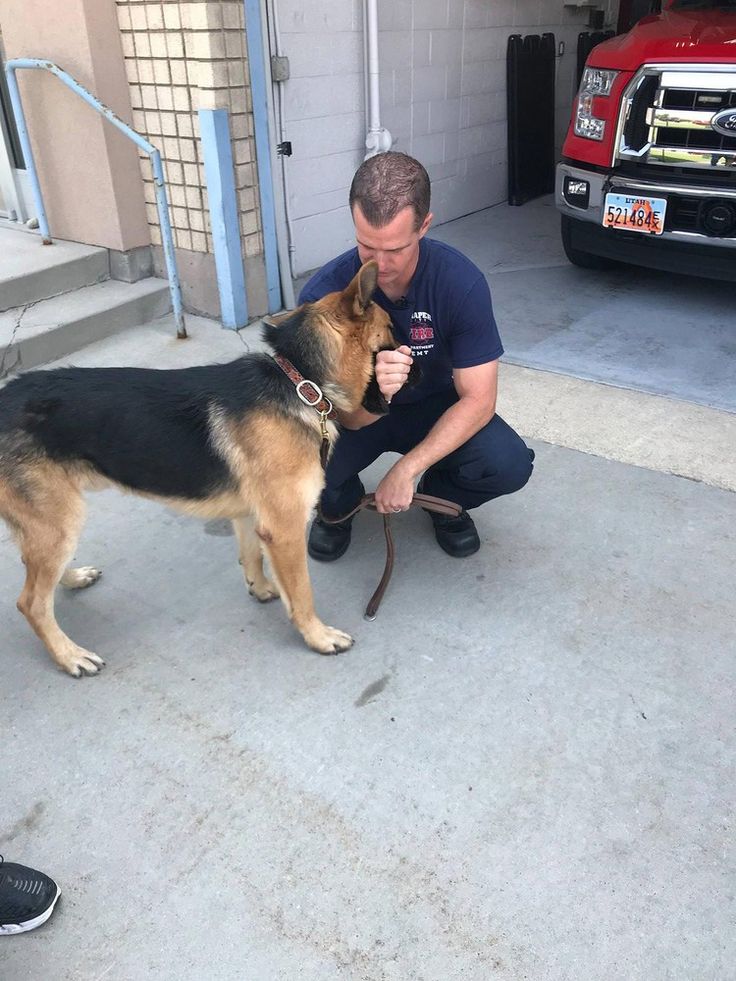
Exhausting their mind through mental challenges encourages calm, thoughtful play.
Playing mind games also:
Mental stimulation and mental exercise are best played 2 to 3 times daily for 5 to 10 minutes each session. Add in a mental enrichment session in the morning before you leave for the day and after their last walk to help calm them down for the evening.
Wondering what mind games your dog will like?
Try out any of these interactive puzzle games for German Shepherds to enjoy indoors. 🧩
Or, how about learning how to play these fun mind games for German Shepherds to reduce boredom?
Step 3: Let them sniff to calm themselves.Pulling and tugging your dog along their walks means they can’t use up their energy sniffing.
Are you guilty of pulling your German Shepherd along on their leash outside, rushing them through the routine, and hurrying them along?
Then you’re missing out on one of nature’s best free ways to tire out and exhaust a German Shepherd!
Did you know that sniffing is exhausting work for your German Shepherd because they mentally have to process the source of the smell? (source)
And while we use our eyes to interpret our surroundings, your dog uses their nose. Compared to the meager 5 million olfactory receptors in our human nose, German Shepherds have around 225 million scent receptors (source)!
Instead of rushing through your walks, let your German Shepherd linger to enjoy their favorite sniffing spots — as long as it’s safe.
Don’t just pull and tug them through the walk, but allow them time to take in all their smells of the environment.
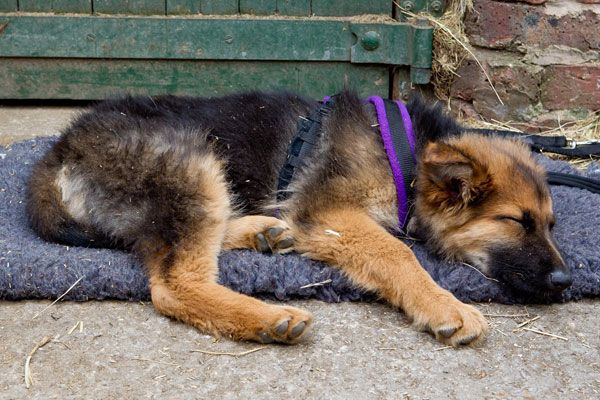
Try this sniffing routine to help calm a hyper German Shepherd:
Sniffing is such a vital part of your dog’s world that depriving him of the opportunity can cause them to become depressed, anxious, or even overly hyper!
If you want to let your dog off-leash to sniff but keep them safe and close, then consider using a long line leash that allows your German Shepherd to sniff around freely while staying safe and nearby.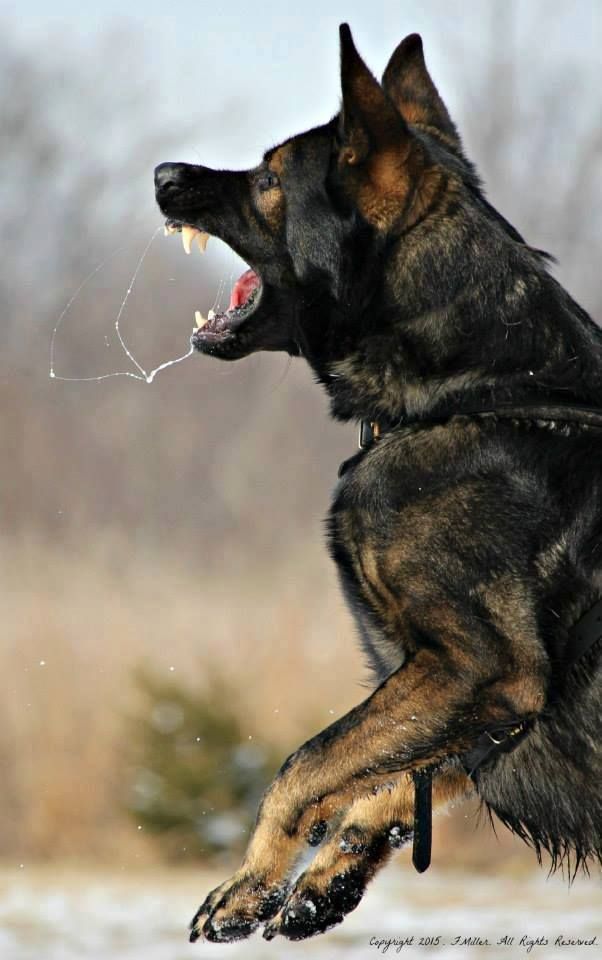
Kong toys to the rescue!
Place your German Shepherd’s food inside a Kong toy which is specially designed to make them work to get to the food. When they become too hyper, focus their attention on the Kong toy.
Here’s why this is important…
They’ll have to concentrate on retrieving their reward through chewing and licking, which are behaviors that have been shown to decrease arousal in dogs. So, they stop whatever unwanted behavior they’re doing and focus on more constructive behavior that helps relieve their hyper energy.
I love to keep multiple stuffed Kong toys in my freezer. Freezing the Kongs increases the time it takes for my German Shepherd to earn her meal, so she stays calmer for longer, and working for her food tires her out.
Feed your German Shepherd from a Kong toy for at least 1 of their daily meals to give them an outlet for their hyper energy.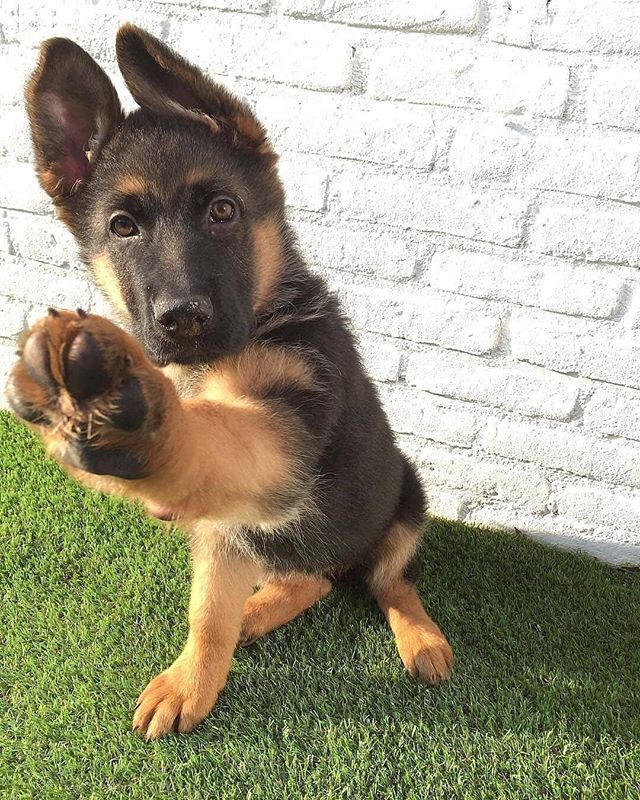 This is one of the daily essentials that I use to help exhaust my German Shepherd.
This is one of the daily essentials that I use to help exhaust my German Shepherd.
You can learn all about how to use one of the greatest tools you’re probably missing by reading this useful guide on The Best Kong Toys for German Shepherds to Reduce Behavior Problems. The guide not only shows the most durable Kong toys so you spend less money but the exact ways to use the Kong to prevent and lessen unwanted behavior issues.
If you want an even more chewing variety, then choose from this list of German Shepherd Toys for Bored Chewers.
Don’t skip out on all the ways you can use the Kong to help your German Shepherd…
Or you’ll regret it later!
Step 5: Build and practice new tricks and training skills.Do you practice and reinforce your dog’s skills in different areas? Or, do they only know their commands inside the house?Do you train your German Shepherd daily?
You’d be surprised at how exhausting working on obedience commands or learning a new trick or skill is for your dog.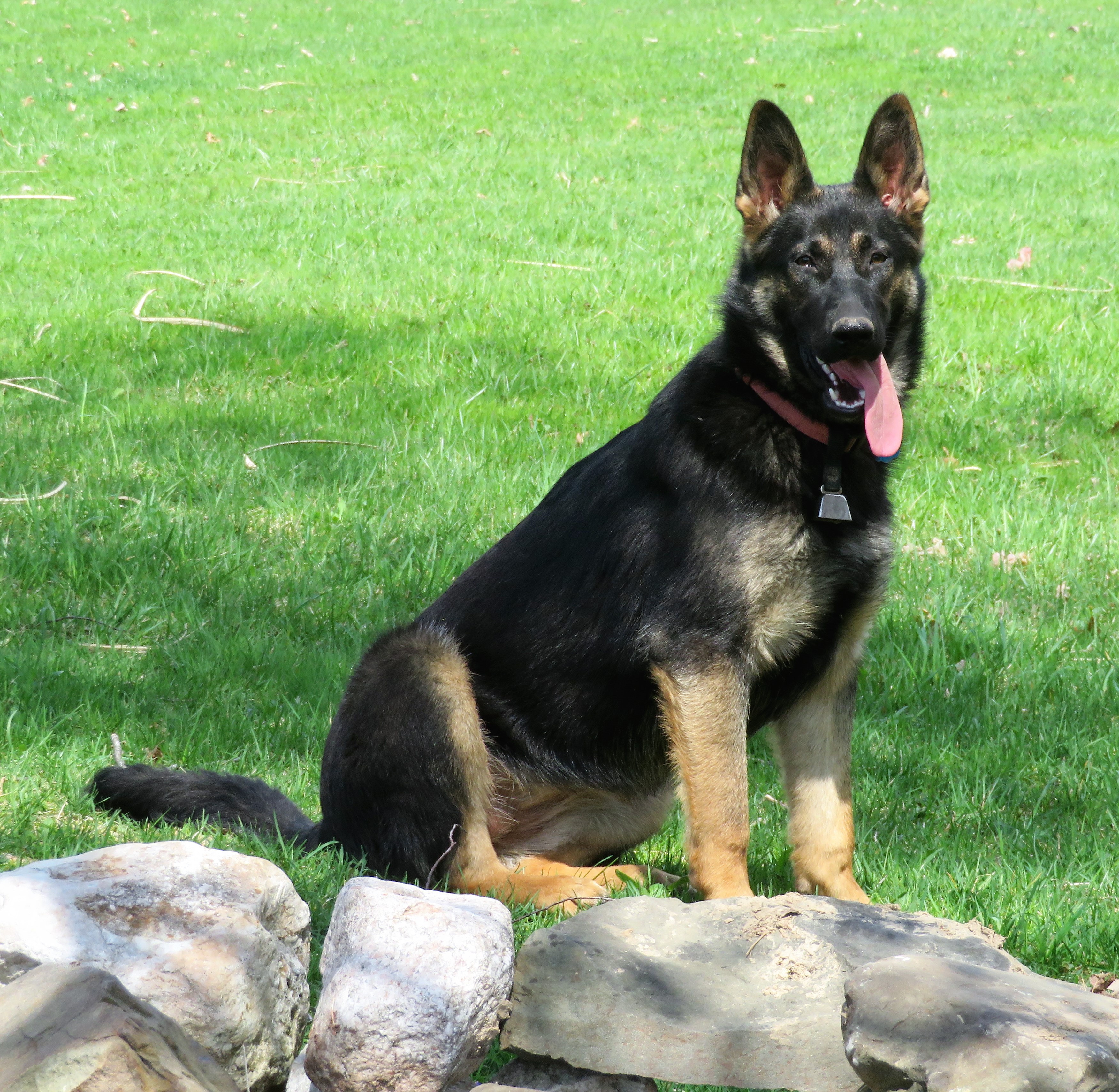 Additionally, building a relationship based on command and responses can help you to redirect your dog’s inappropriate behavior to a competing behavior.
Additionally, building a relationship based on command and responses can help you to redirect your dog’s inappropriate behavior to a competing behavior.
For example, your dog can’t jump on you if they know the down cue and follow your commands. And, if they know a handful of tricks they really love, it’ll be hard for them to run through the house with zoomies when you ask them to show off their new skills.
Spend at least 10 minutes a day, preferably broken up into smaller 2-3 minute fragments spread throughout the day, working on polishing up their old skills and learning new tricks.
Does your dog know all the basic commands even outdoors and if you’re far away from them?
If you need a refresher on the basics you can get step-by-step instructions here: German Shepherd beginner obedience at home.
Even more tiring for your German Shepherd?
Test your dog’s skills when there are distractions around them to see if they REALLY know their commands.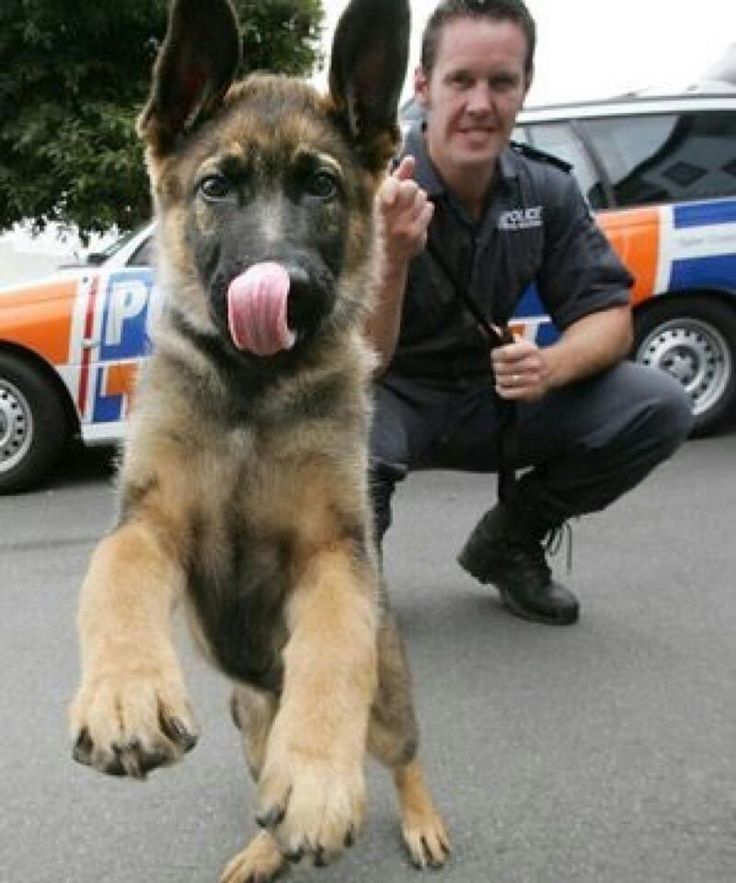 Take them to different, safe areas on a leash and work on what they know and see how well they perform.
Take them to different, safe areas on a leash and work on what they know and see how well they perform.
Start in your home, then try different rooms, in the backyard, front yard, or while on your daily walks. You can then see what you can polish up or add to their skill set.
Why You Can’t Exhaust a German Shepherd Through Physical Exercise OnlyThink again before adding in more and more physical exercise to exhaust your German Shepherd.The German Shepherd is a dog built for endurance, athleticism, and tireless work. There’s a reason why this breed is chosen as a working dog for many different types of environments.
Think about this…
Let’s say you start training for a long race. Every week, you add just a few more minutes of running onto your routine. By the time several months come along, you’re running a half-marathon (or more)!
The same is true for trying to tire your German Shepherd through physical exercise alone.
As you increase your German Shepherd’s walks (or jogs or runs) they adapt to the routine.
Remember, the German Shepherd was specially bred for his adaptability, so he’ll have no problem when you continue to add to his regular exercise. What tacking on more exercise does is simply build a more powerful and athletic German Shepherd.
Let’s be honest, do you try to exhaust your German Shepherd by giving them more walks?
I know the feeling because I’ve been there too!
But, more exercise isn’t the answer.
When you think of exhaustion and tiredness, don’t just focus on the physical aspects. Your German Shepherd is more than a well-oiled athletic machine. Give all their senses a workout to truly tire out your German Shepherd.
The Best Exercise Formula to Tire Out Your German ShepherdThere’s more to tiring out a German Shepherd than just walking.The best way to exhaust a German Shepherd depends on their age, health, and unique personality. But, as a general rule, you can use the following exercise formula to help you exhaust and tire out your German Shepherd.
Adult healthy Shepherds need a minimum of 60 minutes of physical exercise, but most adult German Shepherds do best with 120 minutes of exercise, split throughout the day. This time should include about 15 to 30 minutes of high-intensity physical activity, such as tug or off-leash running. Also, include at least 15 to 30 minutes of mental activity and brain training, a daily chewing session (preferably with a food-filled frozen Kong). And last — but definitely NOT least — set aside 15 to 20 minutes of your day or longer to enjoy one-on-one time with your German Shepherd to help them bond with you.
Exhausting and tiring out your German Shepherd means a complete and balanced routine that you perform daily over a long period.
Tiring a German Shepherd usually isn’t immediately done, but these are the techniques that’ll help make your life with a high-energy working breed more enjoyable.
Hyper PuppiesDon’t assume your puppy is hyper when they could just be cranky and tired!Consider that your German Shepherd puppy might not need you to exhaust them if they seem too hyper and wound up. Puppies need lots of sleep and rest and may act wild, crazy, and uncontrollable when what they really need is a quiet place to rest and get a nap.
Always give your puppy the opportunity to find a place where they can rest, away from the bustle of the family. Many German Shepherd puppy owners have success feeding their dogs a stuffed Kong in their crates or bed when they have a lot of energy, which encourages calmness and helps them to tire while in their resting place.
Try giving your hyper German Shepherd puppy a frozen Kong to help with teething and give them an outlet for their hyper energy or a way to help calm themselves and drift off to sleep.
Use Caution When Exercising a German Shepherd PuppyGerman Shepherd puppies might seem like they can handle almost anything, but their joints aren’t ready for all your great adventures yet.German Shepherd puppies’ bones are still growing and cannot take high-impact activities. Running your puppy while their bones are not fully fused can cause lifelong damage and put them in pain.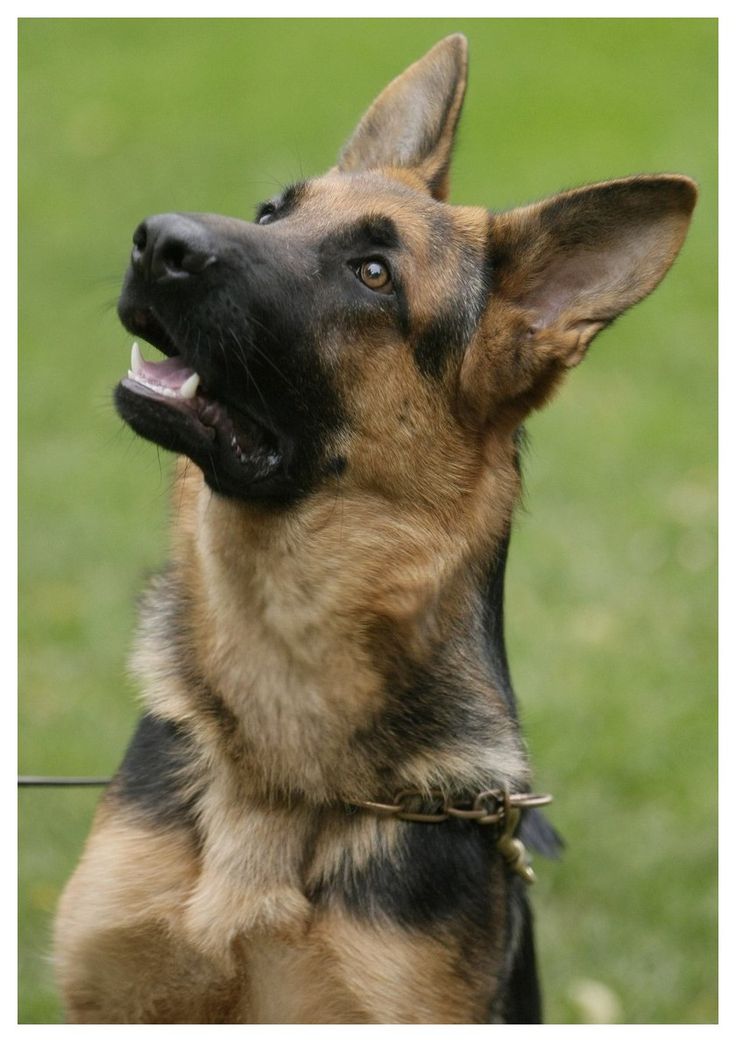
Your German Shepherd puppy needs the right amount and type of exercise for their age. Accidents may still happen but ensuring that you don’t overdo it will give your puppy the best opportunity of developing a strong frame for his body.
Examples of good exercise for German Shepherd puppies include:
As your puppy grows you can then slowly include more activities such as going up and down stairs, jumping onto soft surfaces, and introducing swimming.
Try the following routine when looking for safe exercises for your German Shepherd puppy. The workouts listed in the post work on the essential physical movements your puppy needs to master while protecting his or her soft joints.
Hold off on running and other joint-impacting exercises until your puppy is over 18 months and you’ve checked with your vet (source).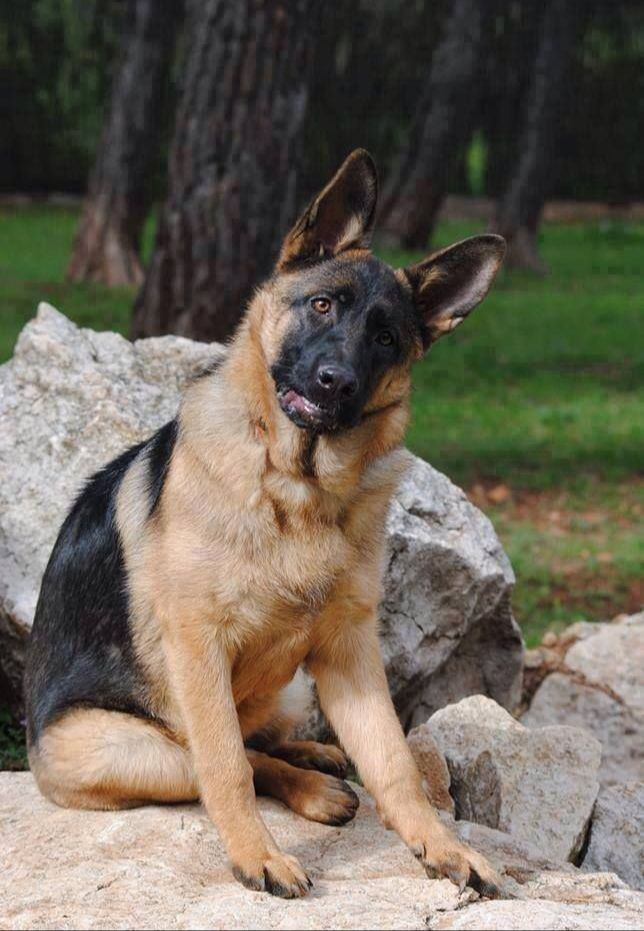 This way, you’ll ensure you keep your dog safe and healthy.
This way, you’ll ensure you keep your dog safe and healthy.
Trust me, you’ll have plenty of years to run a marathon with your German Shepherd after they’re fully grown.
Physical Versus Mental ExerciseDo you know how to exhaust your dog using both physical AND mental exercise?The right balance of mental & physical activity can keep a German Shepherd busy and entertained. A German Shepherd requires both mental & physical activity to not only tire them but exhaust their energy reserves.
To build the perfect plan for your dog, add new steps each day until you find the routine that works for your dog’s energy level. You’ll know you’ve found the proper balance when your hyper German Shepherd begins to relax more throughout the day.
If you’re giving your German Shepherd plenty of physical exercises and they’re still hyped up, then increase their mental activities and the variety of their physical exercise and watch how they respond. (P.S. – There are more fun games to tire out your German Shepherd here you might miss out on!)
(P.S. – There are more fun games to tire out your German Shepherd here you might miss out on!)
A properly stuffed and frozen food-filled Kong can keep a dog busy for 30-minutes or more while tiring out their minds. And puzzle games will provide your German Shepherd with a way to work out when the weather is less than ideal to release some of their energy and improve their problem-solving skills.
In other words…
Tiring out and calming a German Shepherd requires a healthy balance of both mind and body exercise.
Thinking Outside the Box: Tiring Out A German ShepherdTiring out a hyper dog means tapping into all of their natural behaviors.Knowing how to exhaust a German Shepherd means thinking smarter, not harder.
Instead of focusing on more exercise, think of all your German Shepherd’s senses and abilities. Spend time not only with physical movements but mental enrichment, as well as their innate desire to chew and sniff.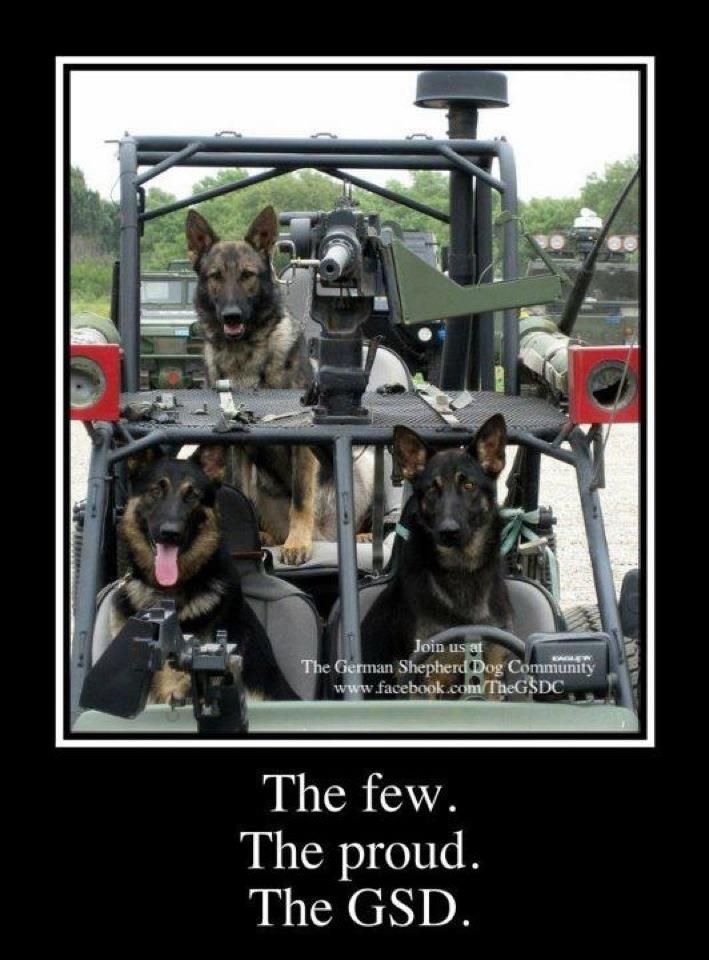
While it takes some time to see the benefits of adding these tips into your daily life, the new routine will give you more freedom with your German Shepherd and help prevent annoying behaviors.
Tiring out and exhausting a German Shepherd means:
Don’t get caught up in the trap of simply increasing your dog’s daily physical exercise. They might seem tired the first few days, but German Shepherds have extraordinary athletic abilities and are known for their quickness to adapt.
The end result of all your running and jogging?
They’ll quickly learn to keep up and outpace you, leaving you in the same spot you were before draining yourself.
Here’s what to do instead…
Think outside the box! 📦
Use your dog’s natural abilities and instincts to build a routine that focuses their energy into productive activities with you that balance both their mental and physical needs.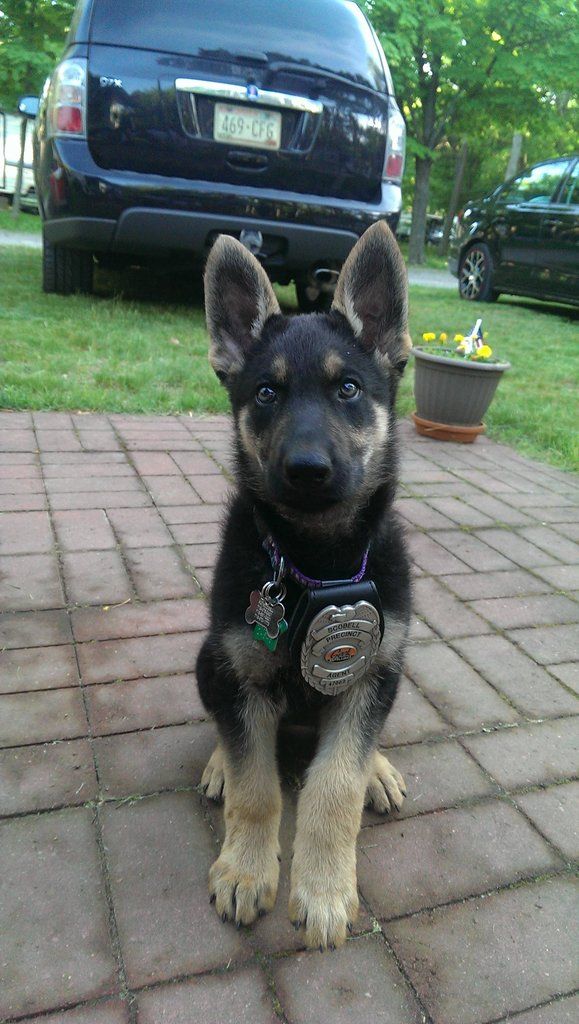
A German Shepherd is capable of learning almost anything, even being calm.
How awesome is that?
These recommendations are designed to raise German Shepherd puppies from birth as pets. They have significant differences from the methods used in breeding dogs intended for breeding use, exhibition careers or sports.
The first days the puppy will behave restlessly in a new place. It `s naturally. At night, he should be well fed and laid in a comfortable, warm place. You can not take a puppy in your arms or in bed - it will become a habit and cause you a lot of trouble later.
Regardless of where an adult dog will be kept, the puppy should grow up in constant contact with people - members of your family for the first 3-4 months. This will contribute to the socialization of the dog and the normal formation of its psyche. In addition, the puppy needs warmth, especially in the cold season.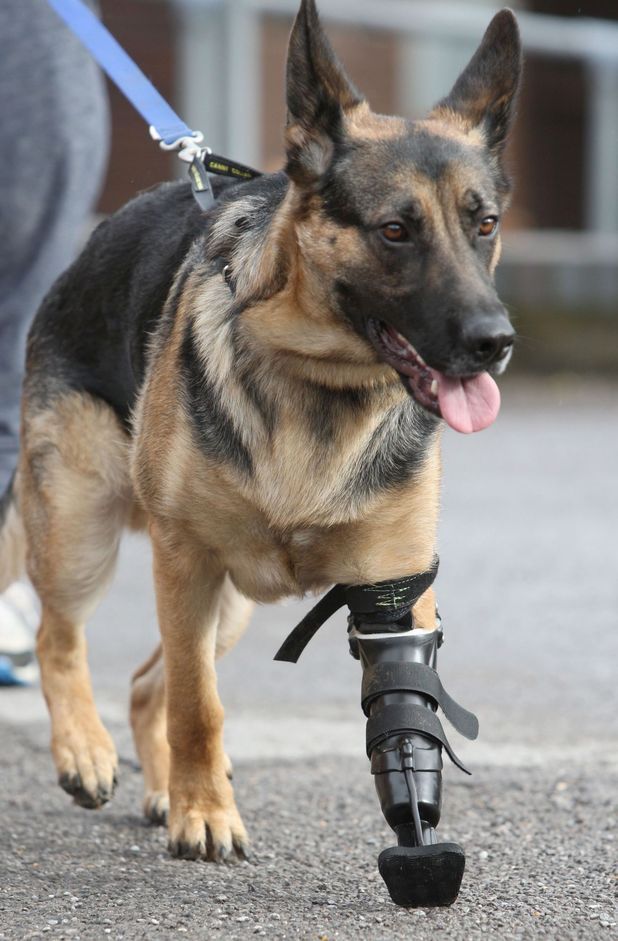 A German Shepherd puppy in an apartment should immediately be allocated a place, away from aisles, heaters and drafts. It should be light and comfortable for the puppy. If conditions do not allow further transfer of the dog to the yard, the place is determined taking into account the fact that it will be permanent. It is not recommended to change it. Place a pad in place. It can be a rug, a thick blanket, or a specially tailored mattress that is easy to clean.
A German Shepherd puppy in an apartment should immediately be allocated a place, away from aisles, heaters and drafts. It should be light and comfortable for the puppy. If conditions do not allow further transfer of the dog to the yard, the place is determined taking into account the fact that it will be permanent. It is not recommended to change it. Place a pad in place. It can be a rug, a thick blanket, or a specially tailored mattress that is easy to clean.
When keeping a German Shepherd in a private aviary, the puppy is transferred there gradually, during the warm season, leaving him in the aviary at first for a short time. The aviary is built in the yard from any available material, any design. It should only be taken into account that the aviary is not in a draft and in dampness. It is best to place it on some hill, facing south or east, so that in the morning the sun's rays fall into it. The aviary should be bright and spacious enough. The minimum size of the paddock is 2 x 3 meters.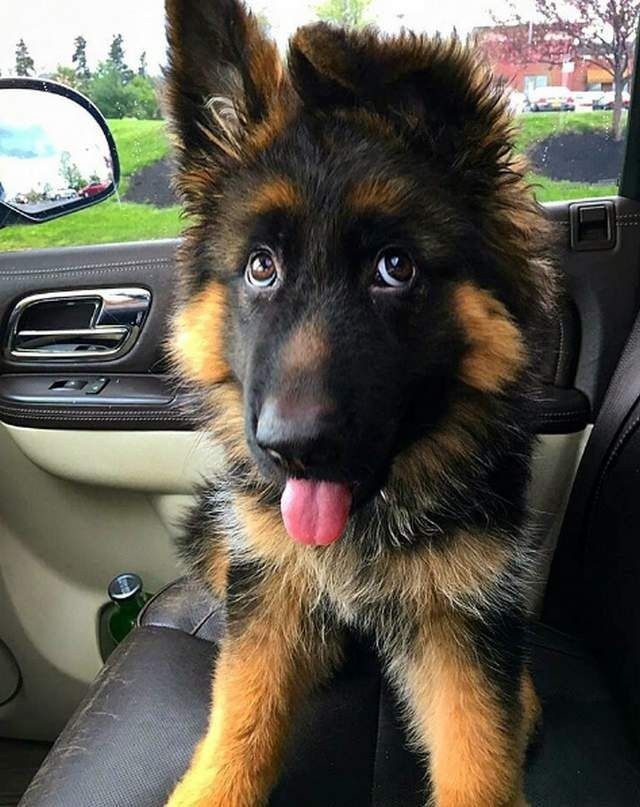 In the aviary, it is necessary to equip a booth or cabin where the dog can hide from the weather and the sun. In the cold season, the booth must be insulated. To do this, it should be made with a double bottom and walls, between which sawdust falls asleep for the winter. The inlet is covered with a tarpaulin. To keep warm in winter, the booth can be covered with snow outside. A litter spreads into the booth. The ideal bedding is hay, straw, or large wood chips, which should be changed periodically.
In the aviary, it is necessary to equip a booth or cabin where the dog can hide from the weather and the sun. In the cold season, the booth must be insulated. To do this, it should be made with a double bottom and walls, between which sawdust falls asleep for the winter. The inlet is covered with a tarpaulin. To keep warm in winter, the booth can be covered with snow outside. A litter spreads into the booth. The ideal bedding is hay, straw, or large wood chips, which should be changed periodically.
You can’t keep a dog on the balcony (the area of movement is limited, the danger that the dog may fall from the balcony is possible), in the garage (the smell of gasoline is harmful to the dog), in the bathroom (high humidity can provoke diseases of the bronchi and lungs), on leashes (the area of movement of the dog is limited, which spoils its exterior and psyche), in dark sheds or pantries (chronic eye diseases occur).
Caring for a German Shepherd puppy in an apartment suggests that you should walk with him as much as possible, and if kept in an aviary, communicate as often as possible.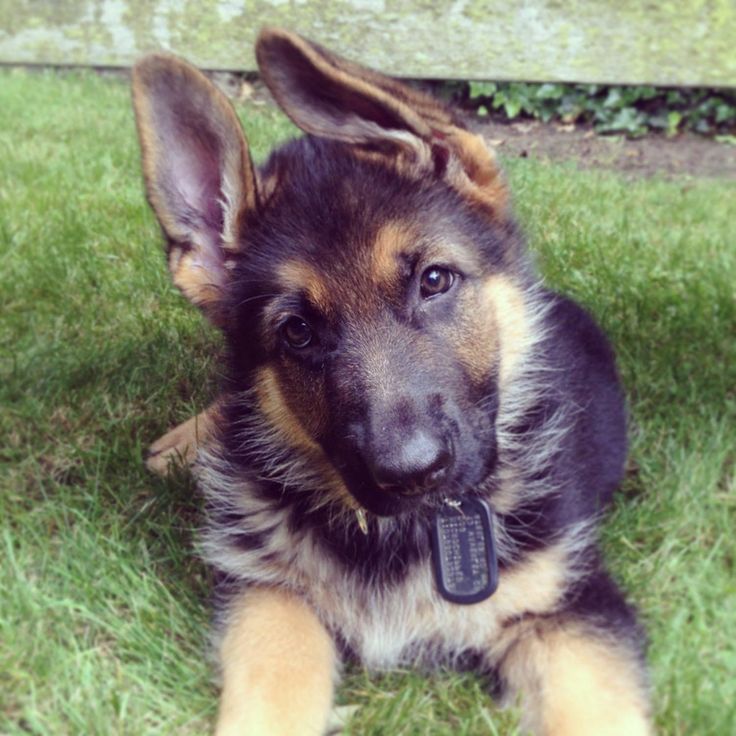 The biggest problem that occurs when keeping a dog in an apartment is the lack of movement, which negatively affects its general physical development, and the biggest problem when keeping a dog in an aviary is the lack of communication with a person, which contributes to the emergence of many unwanted behavioral habits (for example, the habit of jumping on the owner, thus expressing irrepressible joy, the habit of barking for no reason and even howling).
The biggest problem that occurs when keeping a dog in an apartment is the lack of movement, which negatively affects its general physical development, and the biggest problem when keeping a dog in an aviary is the lack of communication with a person, which contributes to the emergence of many unwanted behavioral habits (for example, the habit of jumping on the owner, thus expressing irrepressible joy, the habit of barking for no reason and even howling).
A small puppy kept in an apartment needs frequent, but not long walks, with the goal of socializing and accustoming him to cleanliness. As the puppy grows, the number of walks decreases, but their duration increases. At least three times a day, an adult dog should be taken for a walk, giving her the opportunity to run freely and relieve her needs. For this, 10-15 minutes is enough. It should be remembered that the dog, due to his natural need to mark the territory, needs a little more time than the bitch.
Regardless of where the dog is kept - in an apartment or an aviary, once a day (preferably in the evening, before feeding), she needs to be given a longer walk, which should be combined with elements of physical development, training, preparation for the exhibition.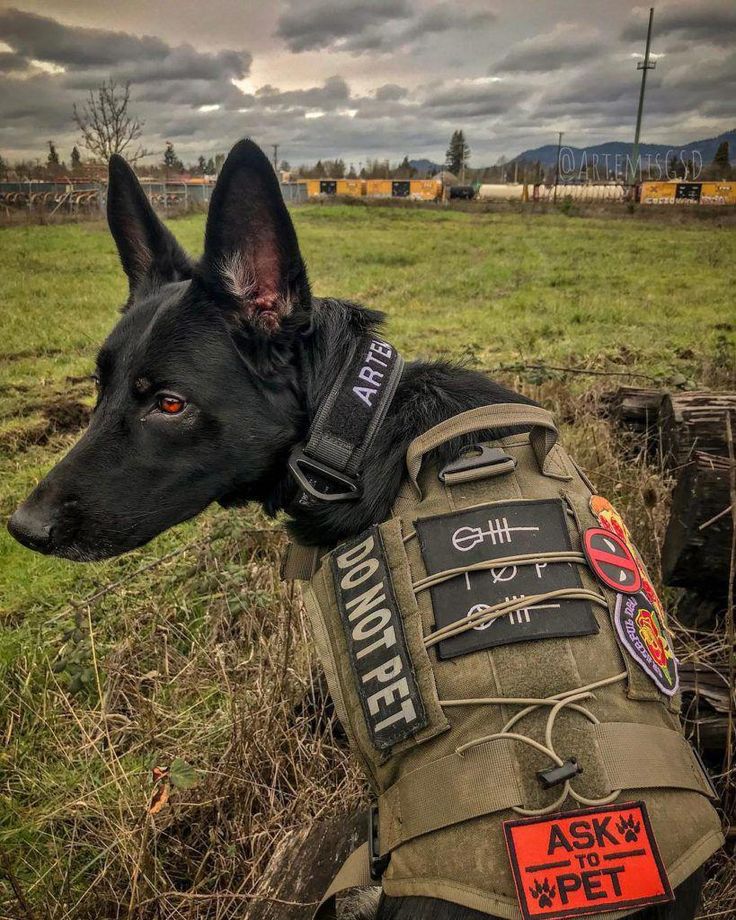 It will not be superfluous to play with peers who develop courage, dexterity, and increase the self-esteem of the dog.
It will not be superfluous to play with peers who develop courage, dexterity, and increase the self-esteem of the dog.
Both the puppy and the adult German Shepherd must be given the necessary care. To do this, they acquire a special brush with small metal teeth, the so-called “slicker brush”. They clean the dog daily, especially during the molting period, which usually happens twice a year and lasts about a month. This procedure does not take much time, but it helps to keep the animal's coat clean, its neat appearance, prevents the appearance of an unpleasant odor, and protects against skin diseases. In addition, when keeping a dog in an apartment, this is simply necessary in order to maintain cleanliness. Simultaneously with hygienic purposes, this procedure is a massage for the skin, promotes a more intensive metabolism in the animal's body. In winter, you can brush your dog with snow.
Do not wash your puppy with soap, shampoo or other detergents unless necessary. This causes brittle hair, dandruff, metabolic disorders.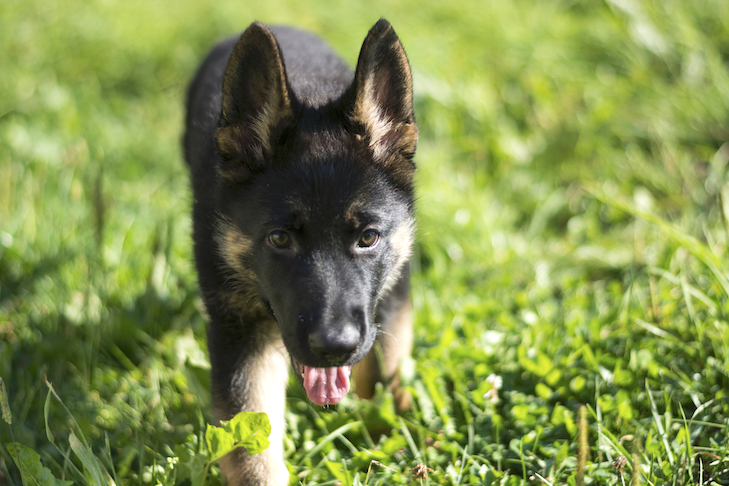 In addition, natural fatty deposits are washed off the dog's coat, which contributes to its faster contamination and the appearance of an unpleasant odor. If, nevertheless, there is a need to wash the dog, do it with a special shampoo for washing dogs (but not antiparasitic!) and rinse thoroughly with warm water.
In addition, natural fatty deposits are washed off the dog's coat, which contributes to its faster contamination and the appearance of an unpleasant odor. If, nevertheless, there is a need to wash the dog, do it with a special shampoo for washing dogs (but not antiparasitic!) and rinse thoroughly with warm water.
To care for your German Shepherd, make it a rule to thoroughly inspect the dog every day after a walk. Look into her mouth, into her ears, feel and carefully examine her head, body, paws. So you will always detect a bone stuck in the gum, a tick in the ear, a thorn in the fur or a cut on the paw and thus avoid serious complications associated with the health of the dog. Such examination can be combined with daily cleaning of the dog. The auricles should be cleaned periodically by moistening a cotton swab with hydrogen peroxide and squeezing it well.
If the dog's eyes turn sour after sleep, it is necessary to wipe the inner corners of the eyes with cotton wool or gauze dipped in boiled water.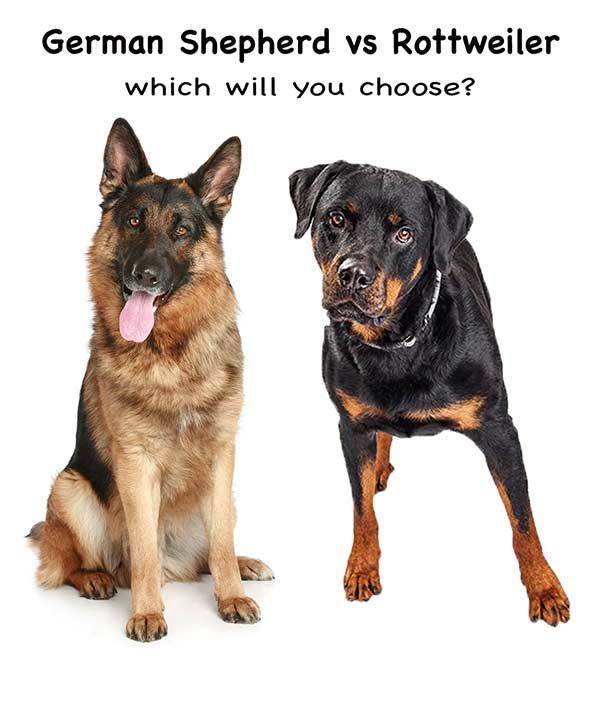 Contrary to popular belief, it is not recommended to use tea - it irritates the mucous membrane and causes even more souring of the eyes.
Contrary to popular belief, it is not recommended to use tea - it irritates the mucous membrane and causes even more souring of the eyes.
When left alone, the puppy gets bored and starts to gnaw on things, furniture legs, this happens especially often during the change of teeth (from 4 to 7 months). Punishing a puppy for this is useless, especially after some time after the deed. It is necessary to remove things, shoes, and buy toys for the puppy that he could play with.
From the age of 2-3 months, almost all puppies try to “try their teeth” on family members - they growl, grab hands, hunt for passing legs. If such games are not stopped, this form of behavior will become fixed in a growing dog and subsequently bring you a lot of trouble, sooner or later behavior correction will be required. The suppression must be firm, categorical, but commensurate with the age and stability of the puppy's psyche.
If there are children in the family, they should be taught how to properly handle a puppy. Communication between children and a dog is beneficial for both, but it must be reasonable. First of all, you can not overwork the puppy with long games. In no case should children be allowed to take a puppy in their arms, lift it by its paws or by its skin - this causes pain to the puppy and, defending itself, it can bite the child. In addition, inept children's hands can drop the puppy and cause serious injury to him.
Communication between children and a dog is beneficial for both, but it must be reasonable. First of all, you can not overwork the puppy with long games. In no case should children be allowed to take a puppy in their arms, lift it by its paws or by its skin - this causes pain to the puppy and, defending itself, it can bite the child. In addition, inept children's hands can drop the puppy and cause serious injury to him.
Adults should also know that it is not allowed to lift a puppy by the front legs or by the skin. If necessary, lift the puppy under the chest with one hand, under the hind legs with the other, pressing them to the stomach. When lowering the puppy to the floor, you need to bring all four of his paws to the floor and only then let him go.
When a German Shepherd puppy enters the hands of a new owner at the age of 1-2 months, he receives the first stress in his life, and care must be taken to make such a change as painless as possible for him. A puppy especially needs care, affection, communication with a person during the first time in a new environment.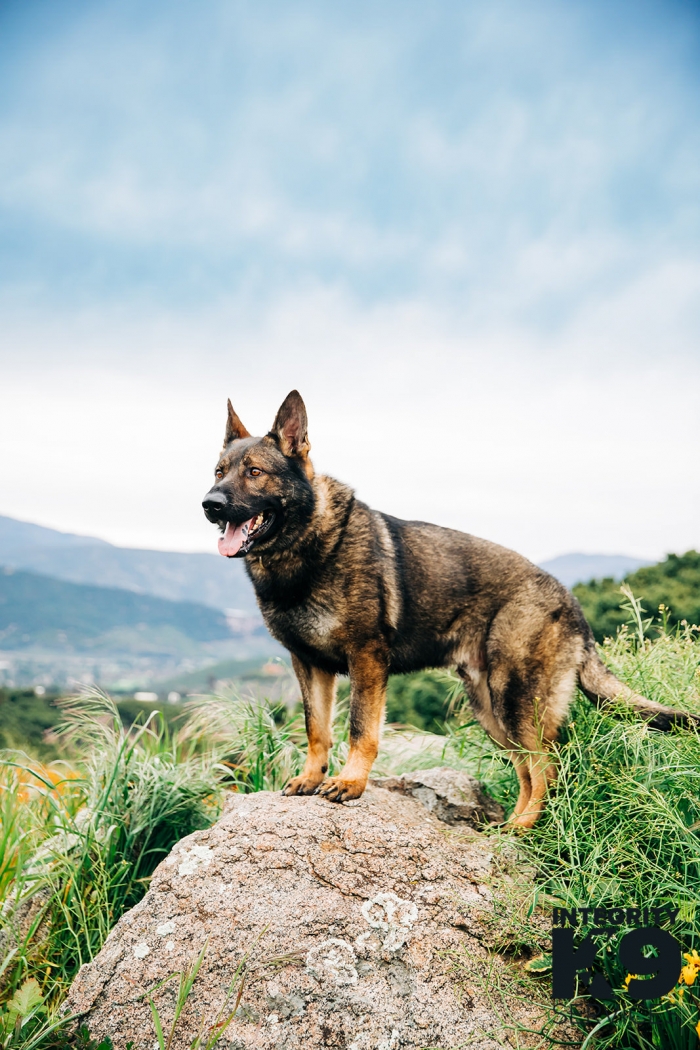 It is at this moment that the contact of the dog with the owner is established, on which the whole process of education and then training will be built in the future. Thus, raising a puppy begins from the moment he appears in your home. Education is not training yet, it's just instilling in the puppy the necessary skills that will later help build the training process correctly.
It is at this moment that the contact of the dog with the owner is established, on which the whole process of education and then training will be built in the future. Thus, raising a puppy begins from the moment he appears in your home. Education is not training yet, it's just instilling in the puppy the necessary skills that will later help build the training process correctly.
At different periods of life, the external environment has a different influence on the formation of the dog's character, and depending on the conditions in which the puppy finds himself, his hereditary inclinations may be formed in different ways. While still under the bitch, the little puppy begins to get acquainted with the outside world. The familiar smell of the mother, brothers and sisters, warm bedding, lack of hunger, gentle voice of the owner - all this even at that time had a positive effect on the formation of the psyche of the future dog. In most countries, there is a provision that prohibits the breeder from taking puppies from their mother before the age of two months, since it is believed that it is during this period that the puppy should avoid stress, get stable skills necessary for the proper formation of his psyche from communicating with his mother and littermates. But, at the same time, it must grow in constant contact with a person.
But, at the same time, it must grow in constant contact with a person.
By the time the puppy's nervous system has formed, his psyche has become stronger and he can be trained on the playground, he must have developed disciplinary, special and protective skills that are instilled in the process of communicating with him, during walks and games. Raising a puppy should never be based on coercion. Each puppy is born with hereditary inclinations. Therefore, carefully studying your pet, try to understand its individual characteristics, and, depending on this, build a methodology for education and initial training. For a stubborn, restless puppy - more patience, for a timid - more affection and encouragement, for a diligent - more encouragement.
The load on a small puppy should be minimal and increase gradually as it grows, from simple to complex, from play to discipline. In this case, you should always treat the puppy calmly and patiently. The owner's bad mood should not be reflected in the puppy.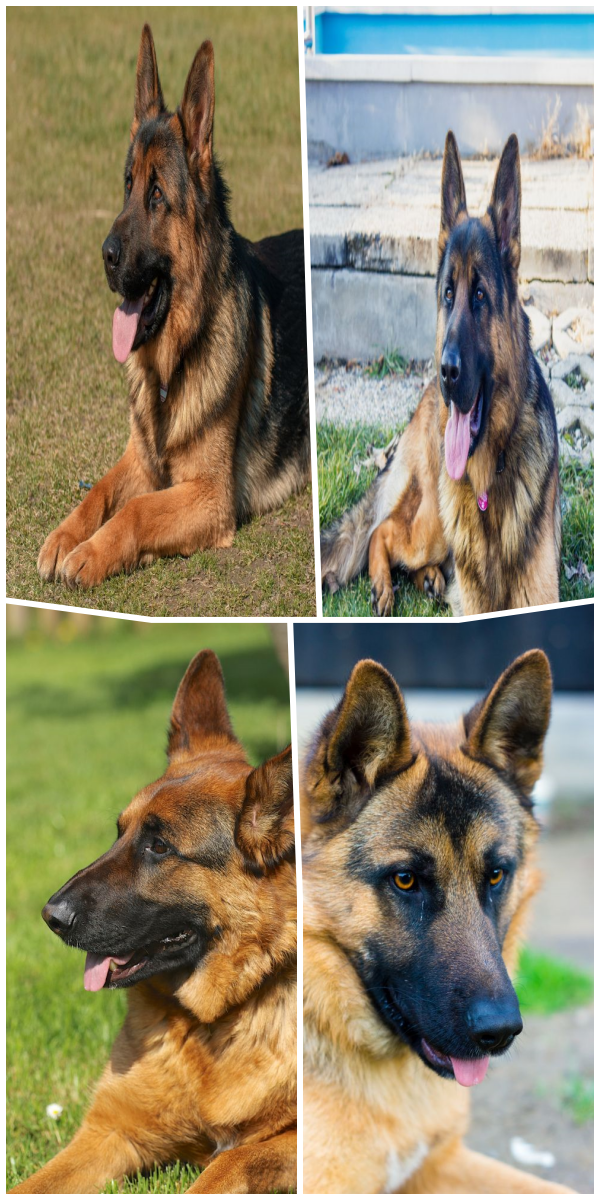 Irritability and incontinence when communicating with a puppy, causeless shouts, and even more so kicks, are completely unacceptable. In the owner, a small puppy should feel its protector - only in this case it will grow up to be the protector of its owner. Do not allow anyone to tease the puppy, hurt him, raise his voice at him, but do not isolate him from people. The dog will have to live in a human society, and it must be socially adapted, safe for others, but at the same time, absolutely manageable, self-confident and able, if necessary, to protect its owner and its home.
Irritability and incontinence when communicating with a puppy, causeless shouts, and even more so kicks, are completely unacceptable. In the owner, a small puppy should feel its protector - only in this case it will grow up to be the protector of its owner. Do not allow anyone to tease the puppy, hurt him, raise his voice at him, but do not isolate him from people. The dog will have to live in a human society, and it must be socially adapted, safe for others, but at the same time, absolutely manageable, self-confident and able, if necessary, to protect its owner and its home.
Ideally, education is the initial stage of training, but still, this is not the same thing. As among people you can meet an educated, but ill-mannered person and vice versa, so among dogs there are trained, but absolutely ill-mannered animals, or educated, but have not passed the necessary course of training. If you set a goal to raise a full-fledged dog, you must combine these concepts. But, if you can train a dog at almost any age - it all depends on the skill of the trainer, then the foundation of education is laid from early childhood.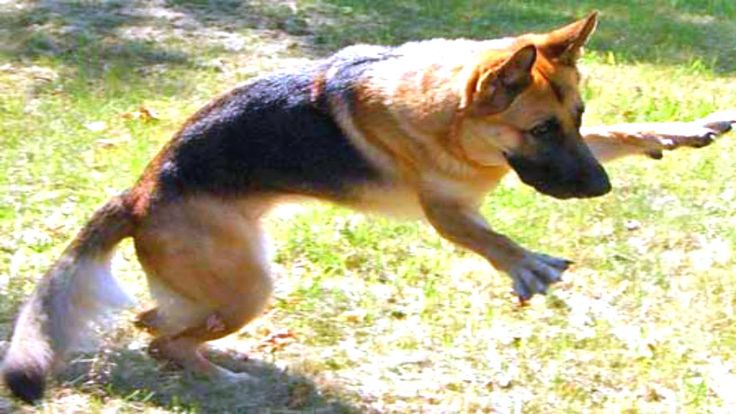 Here, any omissions are irreparable. Therefore, the most basic rule of upbringing says: from the moment a puppy appears in your home, all his desirable actions and deeds should be encouraged and consolidated, and undesirable ones should be stopped, but not so much by prohibition and punishment, but by creating conditions under which the puppy will experience negative emotions at the moment of committing undesirable actions.
Here, any omissions are irreparable. Therefore, the most basic rule of upbringing says: from the moment a puppy appears in your home, all his desirable actions and deeds should be encouraged and consolidated, and undesirable ones should be stopped, but not so much by prohibition and punishment, but by creating conditions under which the puppy will experience negative emotions at the moment of committing undesirable actions.
Raising a puppy should bring joy to both - both the owner and his four-legged friend. Therefore, try not to load the puppy's psyche with endless normative commands, do not demand from him the ability for long-term exercises. Otherwise, instead of a friend and assistant, you will grow up an insecure slave, devoid of cheerfulness and perceiving communication with the owner as a forced and unpleasant necessity.
Each puppy is born with a genetically based set of behavioral reactions (instincts), which cannot be changed at will. But these behavioral reactions can be developed in the right direction or, conversely, their development can be muted if they are undesirable.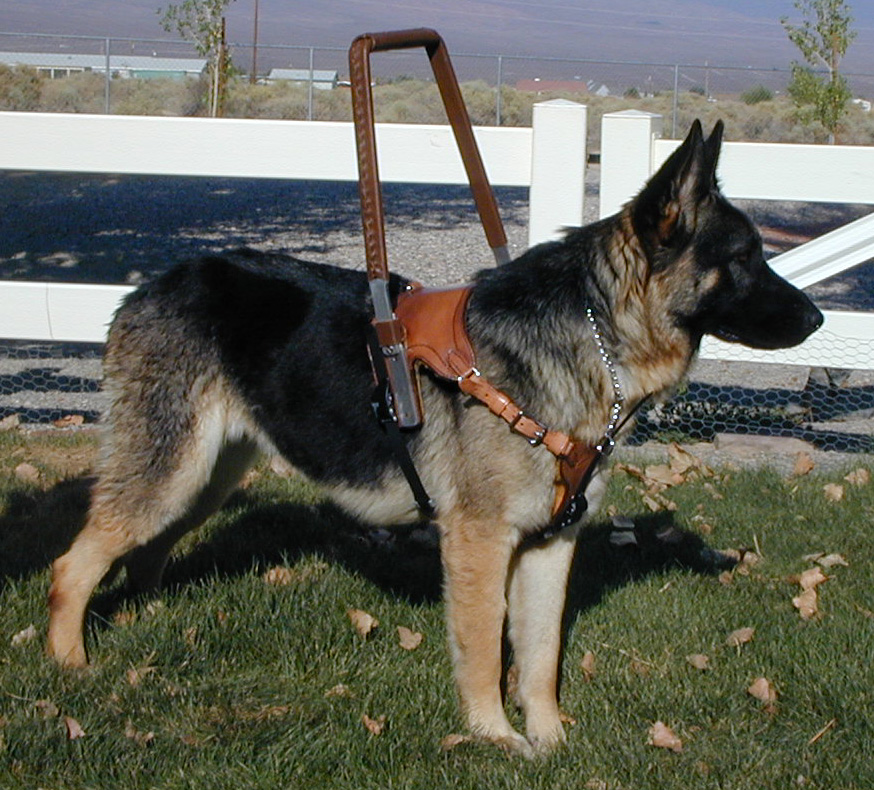 An experienced trainer always subtly feels the dog, studies and analyzes its behavior, uses all kinds of methods to develop its desirable qualities, and painlessly, in a natural way, suppresses undesirable qualities.
An experienced trainer always subtly feels the dog, studies and analyzes its behavior, uses all kinds of methods to develop its desirable qualities, and painlessly, in a natural way, suppresses undesirable qualities.
In the absence of the necessary experience, even before the appearance of a puppy in your home, you should stock up on special literature and study this issue in detail, and later resort to the practical help of a professional trainer.
1. Education of general disciplinary skills
Accustoming to cleanliness. This is the first requirement with which the process of education begins. You should immediately understand that poking your nose into puddles or punishing a puppy is useless, this will not lead to the desired result, but will only disrupt your relationship. You just need to be patient and constantly watch the puppy. As soon as he begins to spin in place, sits down to do his natural needs, you should immediately take him out into the street. To take out a puppy (and later - to take it out) should also be every time after sleeping and feeding. Over time, the puppy will learn to “beg”, and the more attention you give him, following the above recommendations, the faster this will happen.
To take out a puppy (and later - to take it out) should also be every time after sleeping and feeding. Over time, the puppy will learn to “beg”, and the more attention you give him, following the above recommendations, the faster this will happen.
Nickname training also does not require special techniques. Say the nickname whenever you want to get the puppy's attention. The nickname should not replace the command “Come to me!”, It is just a signal for further action.
Training to show teeth. The earlier the training of this technique is started, the faster the puppy will be able to master it. Repeat the reception should be daily, several times a day. You need to do it right. Sit the puppy on your left, put your left foot behind the puppy's croup so that he cannot back away. With your right hand, support the lower jaw of the puppy, put the left one on top of the muzzle, so that the thumbs and forefingers of both hands are near the nose. Without touching the nose and without closing it, pull the puppy's lips in front (up with your left hand, down with your right hand), so that the gums and teeth are exposed. Act quickly and carefully. In the same way, the teeth are shown on the right and left sides of the jaws, after which the puppy is praised and treated with a treat. Pay special attention to this technique, as, according to the rules of the exhibition, a dog that resists showing teeth to an expert is removed from the ring without awarding a mark.
Act quickly and carefully. In the same way, the teeth are shown on the right and left sides of the jaws, after which the puppy is praised and treated with a treat. Pay special attention to this technique, as, according to the rules of the exhibition, a dog that resists showing teeth to an expert is removed from the ring without awarding a mark.
Learning to approach on command. Team "Come to me!" it is easy to train a puppy in the process of playing with him, while walking, feeding. It is very important to start practicing this technique from a very early age, because if you miss the time, you can lose contact with the puppy and this will greatly complicate his further education. Before feeding, show the puppy a bowl of food, say the command “Come!”. When you go out for a walk, stock up on some treats and use them every time you say this command. Praise the puppy that ran up to you on command and treat it with a treat. Remember: the command “Come to me!” should be associated in a puppy only with pleasant sensations for him - stroking, praise, delicacy.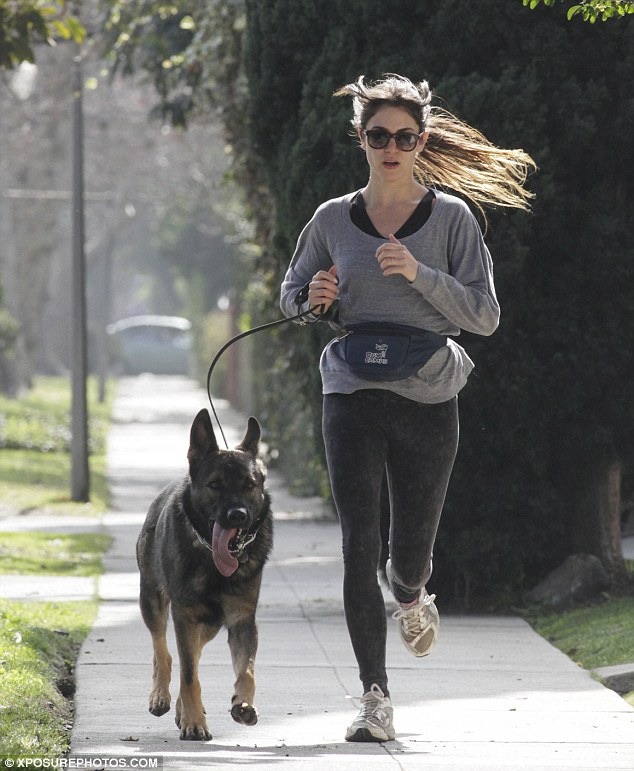 During training, the puppy should be called only if intuition tells you that he will interrupt his lesson and come to you. If the puppy is very distracted by something, you need to wait for the moment when he pays attention to you or use an alternative method, which consists in the fact that the owner turns and walks in the other direction until the puppy notices this and follows him .
During training, the puppy should be called only if intuition tells you that he will interrupt his lesson and come to you. If the puppy is very distracted by something, you need to wait for the moment when he pays attention to you or use an alternative method, which consists in the fact that the owner turns and walks in the other direction until the puppy notices this and follows him .
In no case should you pronounce the command “Come to me” in a threatening tone, you should not deceive a puppy that has run up to you by showing it and not giving it a treat, and even more so - punishing it, even if before that it was guilty of something. The next time the puppy will not come to you, and you will lose contact with him and his trust. At first, you can not use this command if you want to take the puppy on a leash or take it home from a walk. In this case, it is better to approach the puppy yourself, without using commands.
If the puppy shows obedience for several days, you can gradually reduce the frequency of use of treats, but each time you should praise and stroke the puppy for obedience.
The ability to overcome obstacles begins to develop in a puppy at an early age. During walks, do not pass by all sorts of obstacles that are feasible for him: low benches, shallow narrow grooves, and not steep steps. Your task is not to teach the puppy to jump high or overcome difficult obstacles - at his age it is dangerous and harmful, but to instill in him the necessary skill to overcome obstacles, to develop a conditioned reflex to the command “Forward!”. If such a reflex is developed at an early age, later it will not be difficult to complicate tasks. In order for the puppy to happily overcome obstacles that are within its reach, it is best to use your own example, encouragement and treats.
Apportion. In dogs, as in their wild ancestors, the strongest natural instinct is the hunting instinct. It manifests itself in the pursuit and capture of all kinds of moving objects: balls, sticks, cats, field mice, in an effort to wear and tear rags, pieces of rubber, shoes. The modern method of training German Shepherds is almost entirely based on the development and use of this instinct, which is called the prey instinct. The development of such a skill as apportion is no exception. In contrast to the previously used method of coercion, the method of developing the prey instinct gives incomparably better results: the dog works with desire, with passion, with high productivity. To a greater or lesser extent, the hunting instinct (or prey instinct) is developed in all dogs. The owner's task is to encourage the puppy's desire to pick up and wear all kinds of objects from a very early age. Of course, these should not be household items, shoes. But, if this happens, the puppy should in no case be punished for this, he cannot understand the difference between your new boot and an unnecessary piece of rubber. Keep valuables out of the puppy's reach.
The development of such a skill as apportion is no exception. In contrast to the previously used method of coercion, the method of developing the prey instinct gives incomparably better results: the dog works with desire, with passion, with high productivity. To a greater or lesser extent, the hunting instinct (or prey instinct) is developed in all dogs. The owner's task is to encourage the puppy's desire to pick up and wear all kinds of objects from a very early age. Of course, these should not be household items, shoes. But, if this happens, the puppy should in no case be punished for this, he cannot understand the difference between your new boot and an unnecessary piece of rubber. Keep valuables out of the puppy's reach.
So, interest in retrieval should be encouraged and developed, this is the key to successful training in the future. To develop this skill, various games with a stick or ball are used. For training, it is desirable to use an object with a long cord firmly attached to it.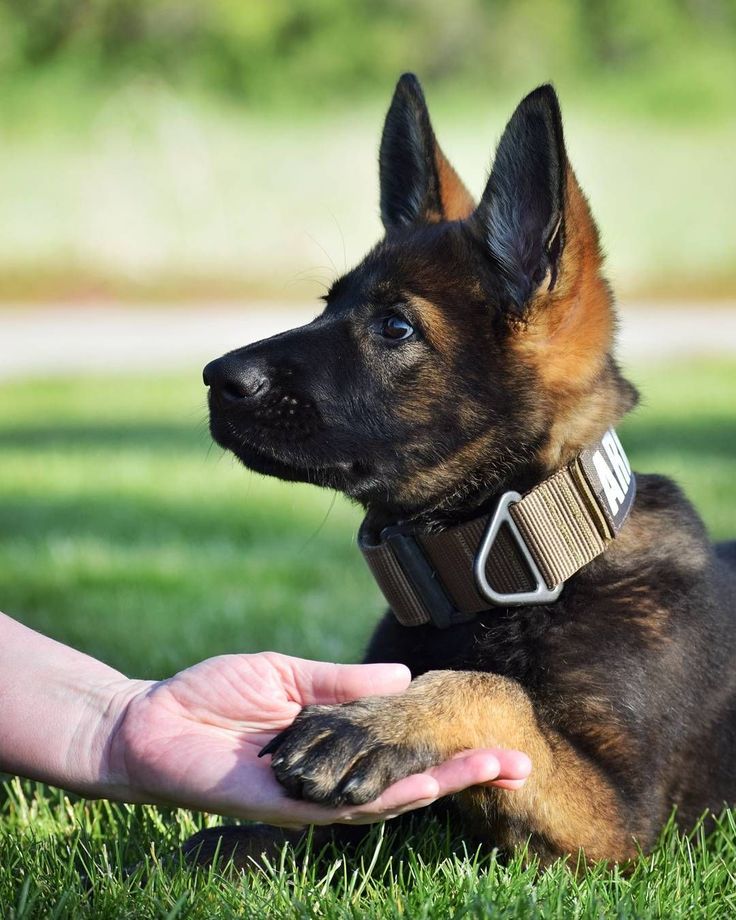 This will allow not only to better develop the instinct for the extraction (capture) of the object, but also to develop the skill of bringing it to the owner.
This will allow not only to better develop the instinct for the extraction (capture) of the object, but also to develop the skill of bringing it to the owner.
It is useful to play with the puppy in pulling the object, while you need to act carefully, not pulling the object out of the teeth, but only slightly pulling it towards you, thereby causing the puppy to want to hold the object tighter in his teeth. In these games, the puppy must always emerge victorious. In the early stages of the development of the prey instinct, in no case should you forcibly take an object from a puppy or chase a puppy, trying to take this object away. You will also make a big mistake if you walk with another, stronger dog, which growls menacingly at the puppy during games, taking away his stick or ball.
The puppy must not play with the tether by itself, toys should be used for this purpose.
In the initial phase of training, the fitting object is never thrown, it is always in the trainer's hands.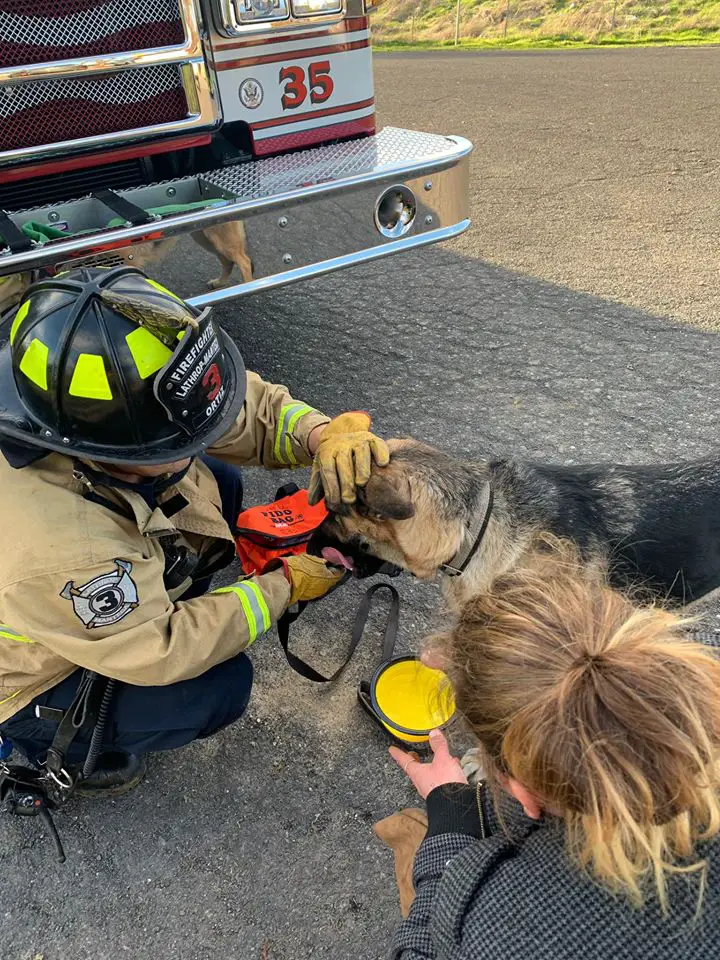 At first, interest in playing with the object is developed, then the dog learns to take and give the object on command, pick it up from the ground, carry it next to the trainer, and only after these skills are consolidated, they gradually move on to throwing the object and teaching the dog to fetch it.
At first, interest in playing with the object is developed, then the dog learns to take and give the object on command, pick it up from the ground, carry it next to the trainer, and only after these skills are consolidated, they gradually move on to throwing the object and teaching the dog to fetch it.
Apporting is a complex technique that requires a lot of time, experience and creativity on the part of the trainer. For a novice dog breeder, he often turns out to be “not up to the task”. Therefore, limiting myself to general recommendations, in case of difficulties, I advise you to contact professional trainers.
Teaching a puppy to sit, lie down and get up on command. These techniques are practiced while walking and playing with the puppy using the same ball, provided that the puppy already has some degree of prey instinct. If not, the usual treat is used. Mechanical impact in this case should be minimal for the puppy.
When developing the skill of sitting a puppy on command, first of all, you need to attract his attention with a ball, then, after giving the command “Sit!”, bring the ball over the puppy’s head, so that he is forced to take a sitting position.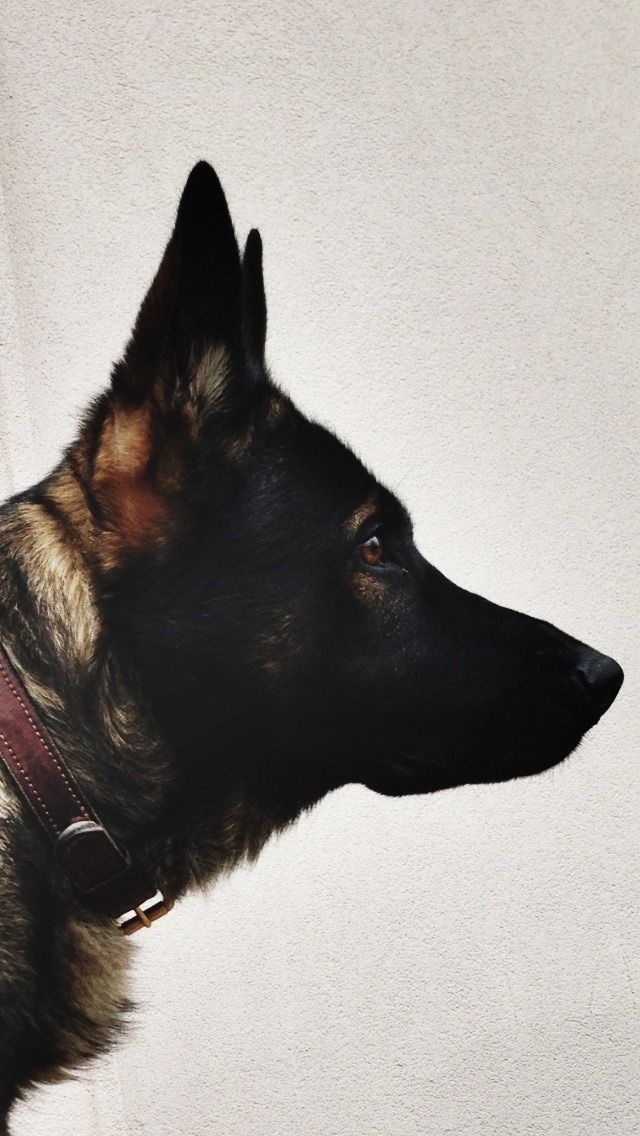 In this case, you can lightly press on the puppy's croup, helping him to sit down, and for a while (within a few seconds) fixing him in this position.
In this case, you can lightly press on the puppy's croup, helping him to sit down, and for a while (within a few seconds) fixing him in this position.
In the same way, they develop the skill of laying a puppy on command. At the same time, having previously given the command “Lie down!”, They release the hand with the ball at ground level in front of the puppy’s muzzle, and with the other hand lightly press on the withers, helping him to lie down.
To practice the command “Stop!” the ball is held at the level of the puppy's head, with the other hand slightly lifting it under the stomach.
When training with a small puppy, one should not require him to stand for a long time when performing any technique. But, within a few seconds, you need to fix it in the desired position. You can not often alternate the commands given, tiring the puppy and overloading his psyche. The whole process of developing disciplinary skills should take place naturally, in the form of a game, and give the puppy obvious pleasure.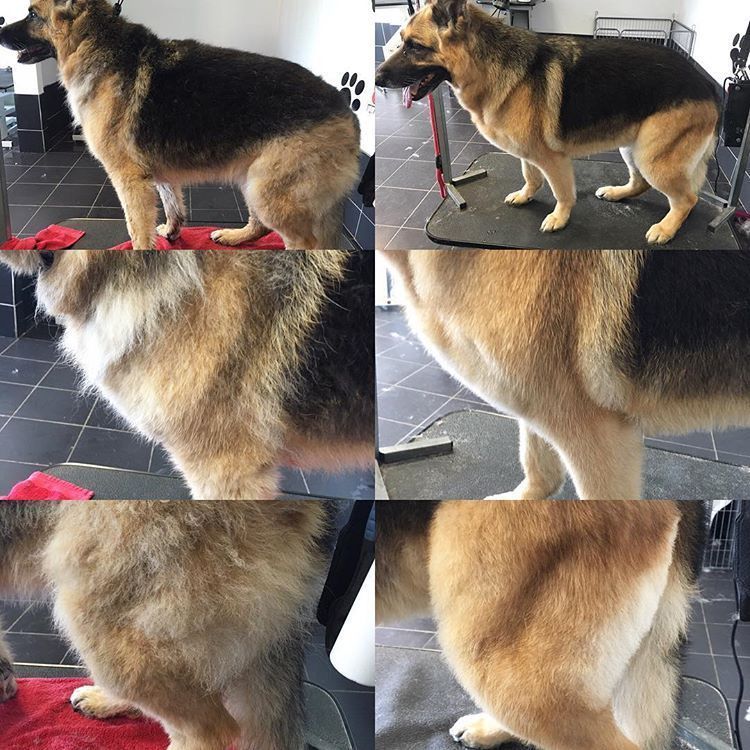
Movement nearby. Previously used methods of mechanical impact on the dog during the development of this skill have proven to be not the best, besides, they have many undesirable side effects. The best results are obtained by a method based, again, on the prey instinct.
To do this, the puppy is taken on a short leash, and, holding it freely sagging in the left hand, they begin to move forward, pressing the ball to their chest with their right hand. First, of course, you should draw the puppy's attention to the ball by playing with it a little. Having started the movement, they give the command “Next!”. Any attempt by the puppy to run ahead or jump up to your right hand must be interrupted by a new command and a jerk of the leash towards the handler's leg. By repeating this technique day after day, you will soon teach your dog the command “Next!” with great desire and interest to move at your left foot.
2. Education of protective skills
This concept includes teaching the puppy to protect the owner.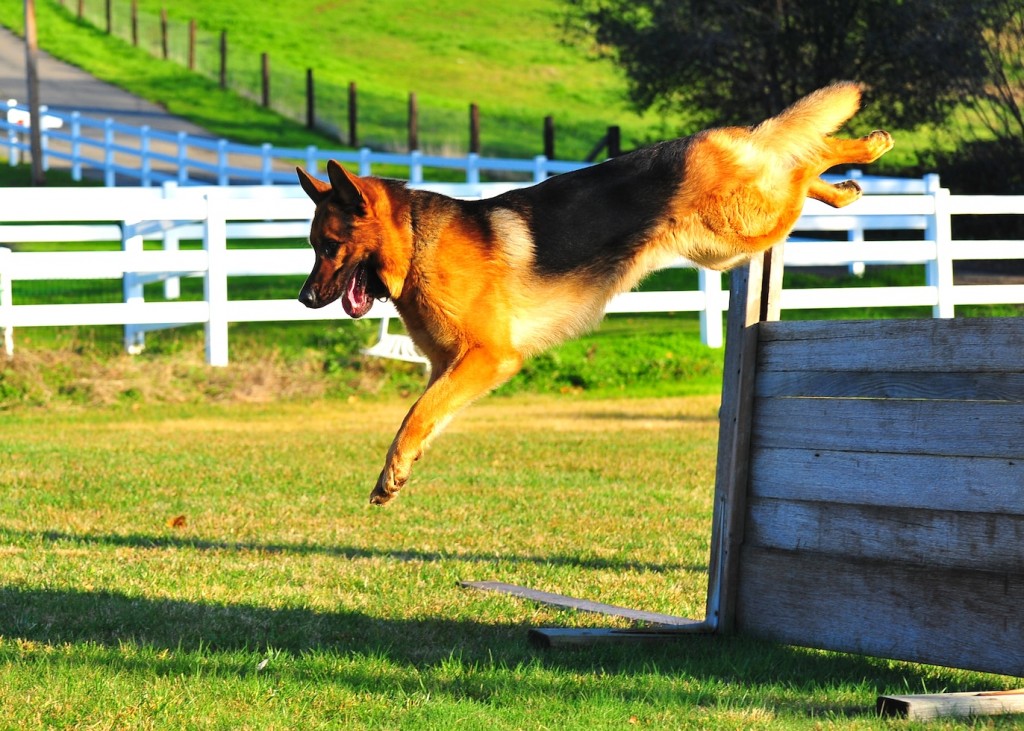 The development of defensive habits has nothing to do with the so-called development of anger, practiced in our training in former years. The idea that the German Shepherd should be vicious and distrustful of strangers has become so entrenched in our minds that it is even reflected in the domestic breed standard. Meanwhile, the German standard, recognized as international, characterizes this dog as noble, good-natured, balanced and self-confident. And the international rules of examination prescribe the disqualification of dogs that show uncontrollable aggression towards humans.
The development of defensive habits has nothing to do with the so-called development of anger, practiced in our training in former years. The idea that the German Shepherd should be vicious and distrustful of strangers has become so entrenched in our minds that it is even reflected in the domestic breed standard. Meanwhile, the German standard, recognized as international, characterizes this dog as noble, good-natured, balanced and self-confident. And the international rules of examination prescribe the disqualification of dogs that show uncontrollable aggression towards humans.
The behavior of a German Shepherd is considered ideal when it is in a free state, being off a leash, it is absolutely safe for others, when it is obedient, easily controlled by the owner, but if necessary, at his command, fearlessly and confidently defends him. The concept of incredulity fundamentally contradicts this type of behavior, and implies the dog's lack of confidence in his abilities, the imbalance of his psyche.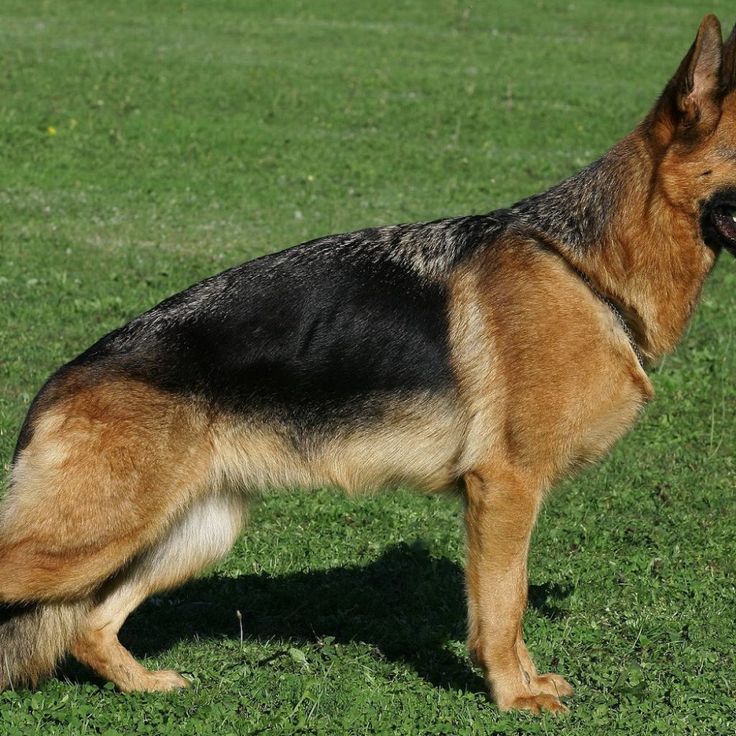
As already mentioned, the characteristics of the dog's behavior are hereditary in nature, and through selection and selection, breeders should influence the formation of the psyche, excluding from breeding animals that are unbalanced, uncontrollable, aggressive or prone to cowardice. But, education is also of considerable importance, which aims to identify the hereditary characteristics of the dog, develop useful and muffle the negative qualities of its character.
From a very young age, any manifestations of aggression should be stopped in a puppy. It is unacceptable to set the puppy on people, to allow one of the outsiders to tease or beat him. All this is an unbearable stress factor for his psyche. In the future, in such a dog, aggression becomes uncontrollable and, as a rule, borders on cowardice, which manifests itself in extreme situations. Therefore, in order to develop a puppy's normal behavior and a stable habit of “biting” only at the command of the owner, when it is really necessary, at the initial stage of development of protective qualities, the prey instinct already known to us is used. This technique has become widespread throughout the world.
This technique has become widespread throughout the world.
The basic skills begin to develop in a puppy from the age of three months, when he is offered a game with a cloth. The initial task is to develop the puppy's interest in such a game. When playing with a puppy, it is necessary to act actively, but at the same time carefully, without attacking the puppy, without frightening him, and without tearing the rag out of his teeth. A rag can be animated by tying it to a rope. Usually all puppies willingly accept such a game, attack the rag, bite it, try to take it away. In this case, the puppy is praised and at the moment when he grabbed the rag with his teeth and pulls it towards himself, they let him go so that the puppy has the impression of taken prey.
The owner himself develops the initial skill of playing with a rag, repeating such games daily. Gradually, the puppy is taught to this game in the presence of a stranger. The assistant at first simply watches the game, then takes a passive part in it, and finally, completely replaces the owner, who is right there and holding the puppy by the leash.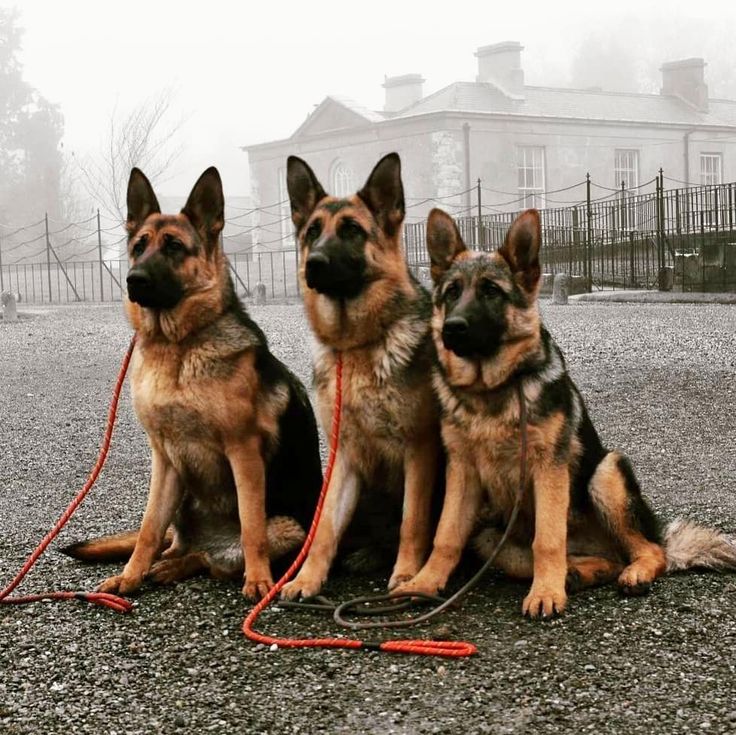 The assistant must be an experienced and competent specialist - the defendant. The owner and assistant must act in concert, depending on the behavior of the puppy and strive to develop the necessary fighting skills in him as much as possible. The owner should encourage and encourage the puppy. In all games and fights, the puppy must be the winner and take the prey.
The assistant must be an experienced and competent specialist - the defendant. The owner and assistant must act in concert, depending on the behavior of the puppy and strive to develop the necessary fighting skills in him as much as possible. The owner should encourage and encourage the puppy. In all games and fights, the puppy must be the winner and take the prey.
As the puppy grows, the task becomes more difficult. The rag is gradually being replaced by a small, soft roller, with the help of which the puppy is already developing a grasping skill. And only after some time, the roller can be replaced with a soft sleeve, which is put on in such a way that at the right time it can be easily thrown off - to give the prey to the puppy. When working with a rag, roller or sleeve, you need to give the prey only at the moment when the puppy is firmly and persistently dragging it towards itself. If the puppy does not have a very active and deep grip, if he often throws a rag during the game, the assistant should try at the moment of the bite, by slightly pulling on himself, to make the puppy hold it tighter.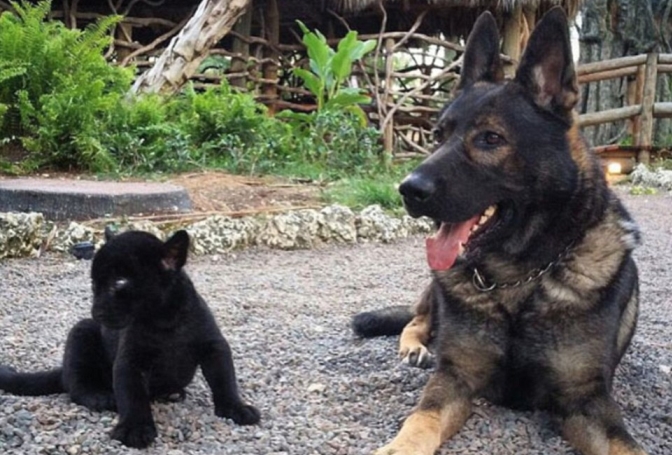 In this case, they do not proceed to work with the roller until the puppy has developed a strong and persistent grip. The same should be taken into account when moving from the roller to the sleeve. At the end of classes, you should always let the puppy carry off his prey.
In this case, they do not proceed to work with the roller until the puppy has developed a strong and persistent grip. The same should be taken into account when moving from the roller to the sleeve. At the end of classes, you should always let the puppy carry off his prey.
When the dog has developed a strong habit of grabbing and holding the sleeve tightly, they gradually switch to launching the dog after the escaping helper. At first, the dog works on a leash, and the starting distance does not exceed a few steps. Then the distance gradually increases, the pace and trajectory of the assistant's run change, a “frontal attack” is introduced, the dog learns to work on a hard sleeve.
In no case should you force things and try to complicate the task for a young dog. With a properly planned process of developing protective skills, by the age of one and a half years, the dog will be able to work out the detention of any degree of complexity.
3. Training in special skills
The German Shepherd is suitable for use in a wide variety of services, but it has received the widest and most effective use as a search dog, as it has an extraordinary innate ability to search, passed down from generation to generation.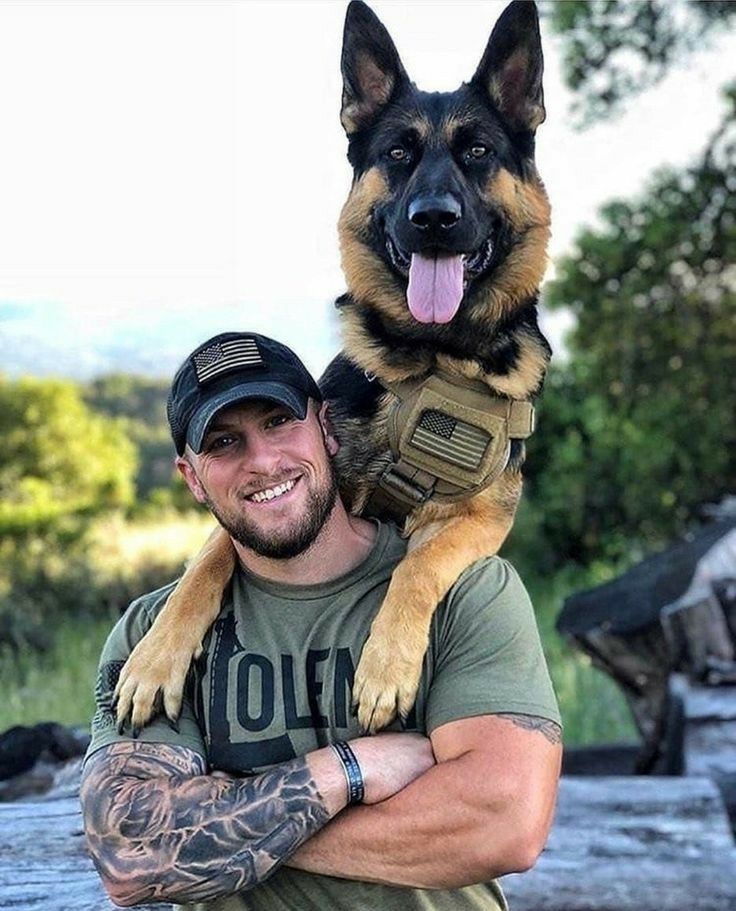 The task of any owner of a German Shepherd is to develop these natural abilities at least minimally, even if you do not set the goal of using the dog in tracking work.
The task of any owner of a German Shepherd is to develop these natural abilities at least minimally, even if you do not set the goal of using the dog in tracking work.
There are many methods of setting a puppy on the trail, but the most effective results were shown by a method based on the puppy's interest in a treat, which allows him to develop the necessary skills from 5-6 months of age.
The first lessons should be done in the field, early in the morning, in fine calm weather. Nearby there should be no extraneous stimuli that prevent the puppy from concentrating - people, other animals, passing cars, etc. Classes are held before feeding the puppy. Take pieces of food and a jar of broth with you.
Begin practicing the skill by laying the owner's trail. The puppy is tied up (he must first be familiar with this procedure), a direct track is laid on a fresh, not trampled area. The first sections of the track should not exceed 30-40 meters. Before laying the track, the trainer enhances its smell by trampling well at the starting point and lightly watering this place with broth.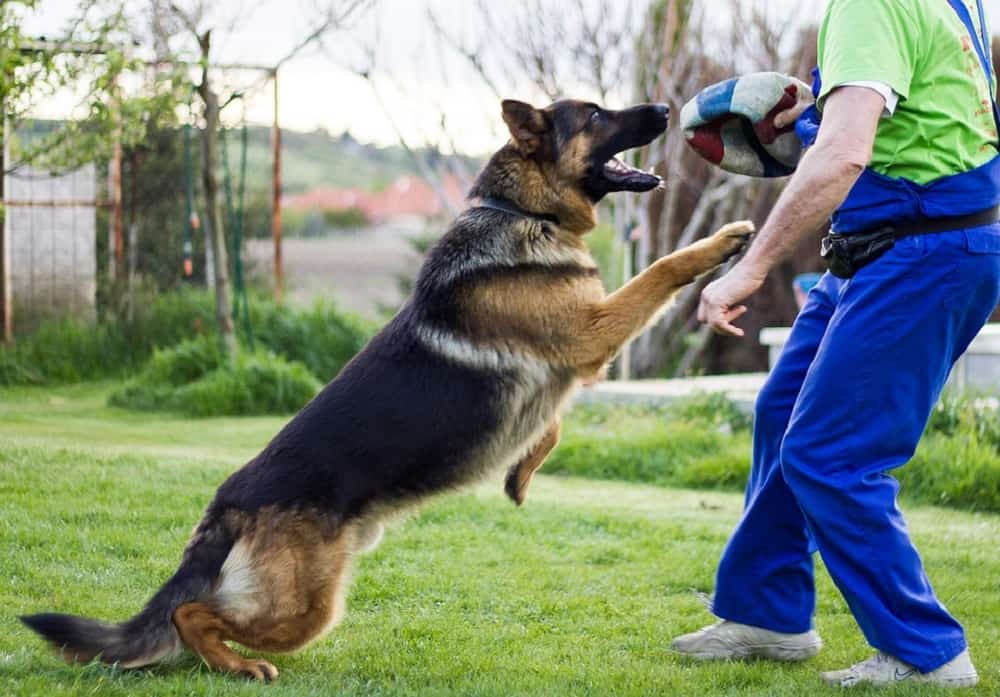 Throughout the trail should also have an enhanced smell - when laying a trail, you need to move slowly, with a shuffling gait, and periodically, in a thin stream, water the trail with broth from a jar. After 2-3 meters from the starting point, the first piece of food is placed on the track, then the pieces are laid out along the entire length of the track every 2-3 meters. At the end point, a piece of food is also placed, which, after working out the trace, is given to the puppy from the hand.
Throughout the trail should also have an enhanced smell - when laying a trail, you need to move slowly, with a shuffling gait, and periodically, in a thin stream, water the trail with broth from a jar. After 2-3 meters from the starting point, the first piece of food is placed on the track, then the pieces are laid out along the entire length of the track every 2-3 meters. At the end point, a piece of food is also placed, which, after working out the trace, is given to the puppy from the hand.
The trainer, having laid a trail, returns to the puppy. The puppy is brought to the track and, encouraged by the owner, begins to sniff the smell of the broth at the starting point. Repeating the command “Sniff! Next!”, the trainer directs the puppy towards the first piece of food. When eating it, he praises the puppy and stimulates his further progress along the trail with a leash. Attracted by the smell of the broth and the bits of food it finds and eats, the puppy will usually follow the trail carefully from the first time to the end.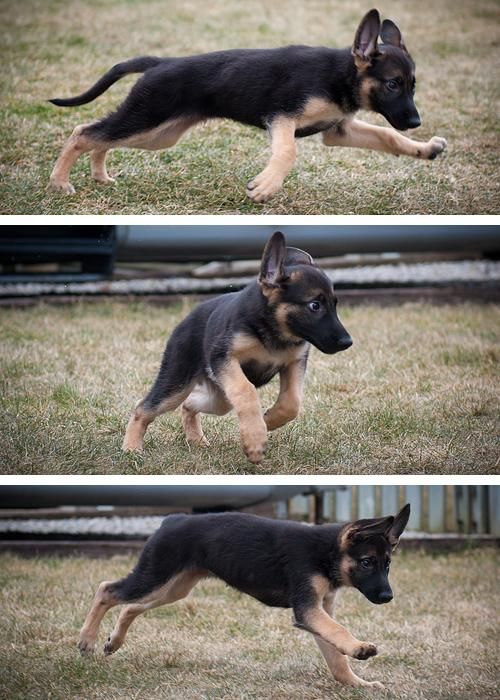 If the puppy passes a piece of food on the trail, it needs to be corrected. At the end of the trail, the found piece should be given to him from the hand and praised well.
If the puppy passes a piece of food on the trail, it needs to be corrected. At the end of the trail, the found piece should be given to him from the hand and praised well.
After several studies of the trace and the development of a conditioned reflex to the command “Sniff! Track!”, the task is gradually complicated: they use only food, without broth, increase the distance between the pieces and the distance of the track, lay a track with right angles, first with one, then with two, teach the puppy to search for objects on the track, and finally, to study trace of a stranger.
To practice the search for objects that the dog should designate with laying, the already practiced command “Down!” is used. To do this, 4-5 objects are laid out on a direct trail and when the dog passes by the object, draw its attention to the object with your hand and give the command “Lie down!”. After repeated repetitions, the dog gets used to lie down near the found things during the study of the trace.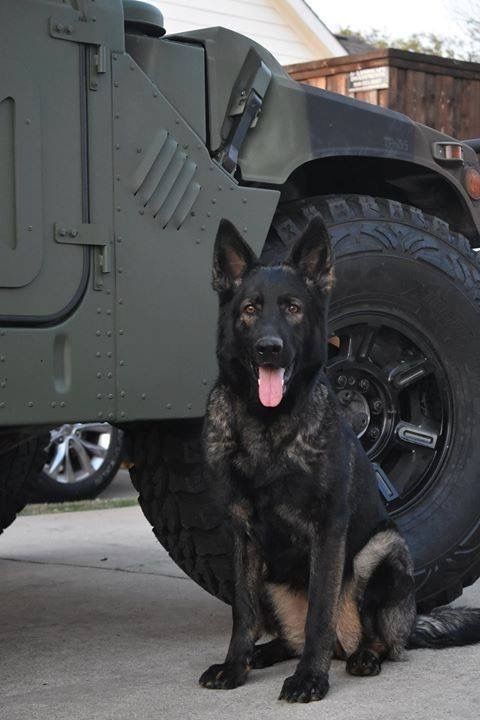 At first, the objects should be the same, in the future they should be diversified. Gradually, fewer and fewer pieces of food are left on the trail, until, finally, they completely disappear. By that time, the dog should already have clearly developed the skill of working on the trail.
At first, the objects should be the same, in the future they should be diversified. Gradually, fewer and fewer pieces of food are left on the trail, until, finally, they completely disappear. By that time, the dog should already have clearly developed the skill of working on the trail.
These recommendations are a general template for the initial training of a German Shepherd puppy. The process of training itself is much deeper and more complex, and most importantly, in my opinion, it cannot be described in any, the most detailed manual. The psyche of dogs is so individual and unique that template advice and recommendations are not suitable for each specific case. And if it were possible to create such a manual, then it would have to be created for each specific dog, and it would be impossible to take into account all life situations, the dog's reaction to them and methods for managing its behavior.
Any, the best book on dog training can only give basic knowledge in this matter, help to understand the theoretical foundations of training, and everything else is intuition and a creative process that defies description.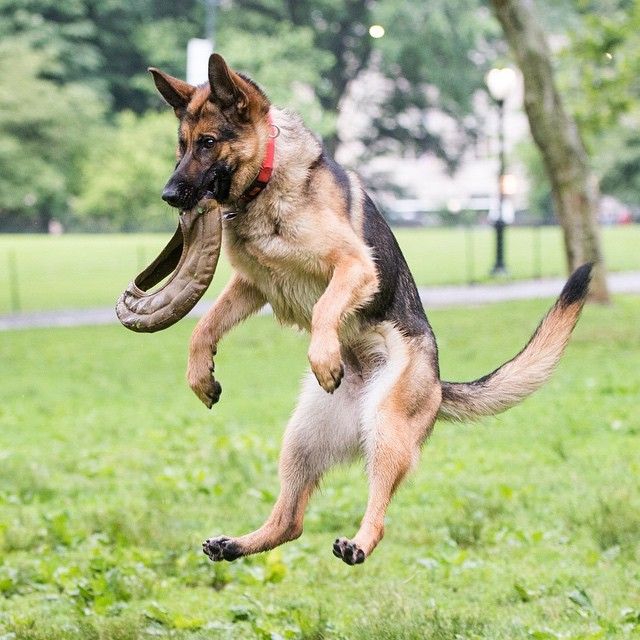
Therefore, listen to the last advice - if you do not have the experience and necessary knowledge - do not experiment on your dog, trust the practical help of a professional trainer who works mainly with German Shepherds.
Lyudmila Arkhangelskaya
From the book "German Shepherd"
My first German Shepherd never showed hunting instincts and is very dependent on the owner. There is only one person she listens to and takes seriously, and that is me. She chose one master, and that person became the center of the universe. As for those around her, she often manipulates them.
The German Shepherd is a calm, attentive dog that never lets his owner out of his sight.
In society and on walks, he behaves calmly, he is easily accustomed to a leash and a muzzle, and competent owners do not have any special problems with a German shepherd.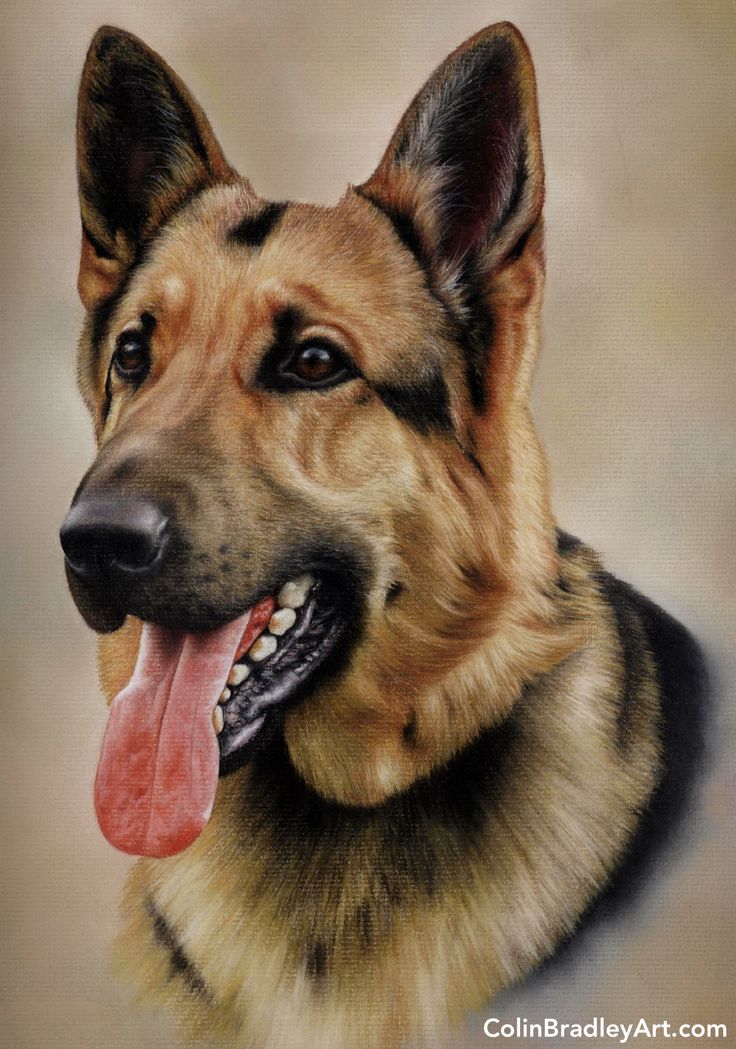
Breeder's observation: If the German Shepherd is worried about something, he will bend at the elbows and raise his coat. But if I am calm, do not pull on the leash and do not pull the dog, alertness does not turn into stress and does not turn into fear.
The German Shepherd is a very active dog, playful, but bursts out with energy during a walk, and behaves calmly and relaxed at home. If she did not have enough walk, she will bring a toy and asks to go for a walk again. On walks, these dogs must be occupied.
A heavy load can tire the German Shepherd, but in general this breed is easy to get on with.
Breeder's observations: German Shepherds do not like loneliness very much, and this feature must be taken into account. There was a case when, when trying to get out of isolation and get to the beloved owner, the door was eaten.
German Shepherds, when properly trained, do not show aggression towards people, including children.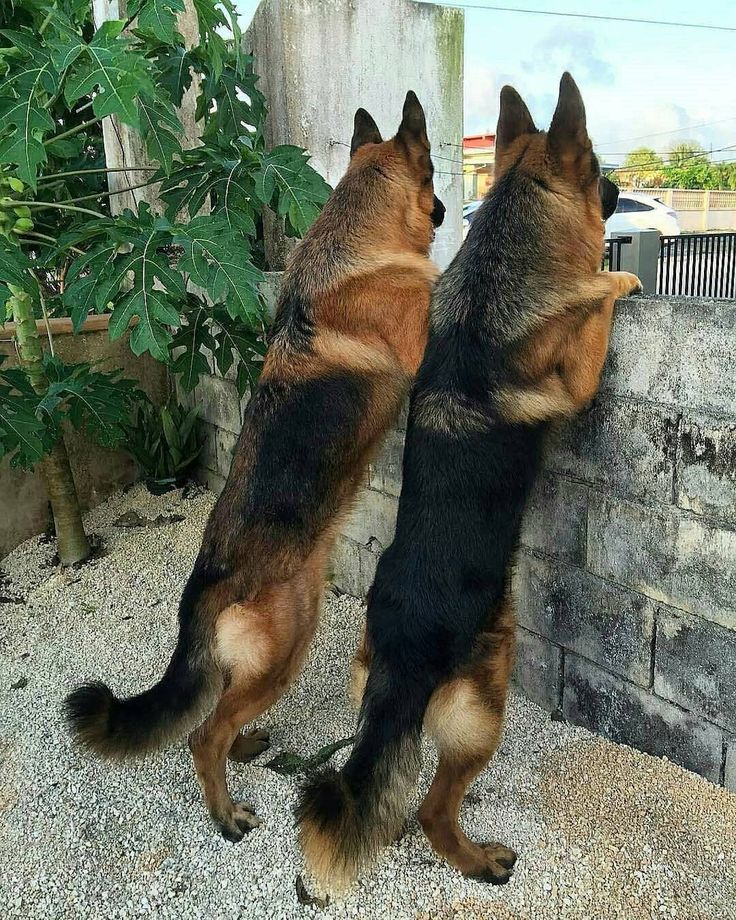 These are balanced dogs with a stable psyche.
These are balanced dogs with a stable psyche.
My German Shepherd loves children very much and loves to play with them. If there is a small child in the house, she will follow and make sure that nothing bad happens. It tolerates all children's antics, allows climbing on itself, picking its teeth, but not for everyone. If the child is already at a sufficiently conscious age, then she does not allow climbing on her own and leaves if she does not like something.
She also gets along well with other animals and often plays with dogs. Never the first to enter into fights, endures all provocations to the end, but if another dog hurts her, then there will be not just a conflict, but a fierce fight. At my call, of course, he will stop the fight, and in this case, if the other dog does not insist on continuing, everything ends peacefully. But if the enemy goes on the offensive again, they will have to separate the dogs by force.
A German Shepherd can get along well with other pets in the family, but often a shepherd dog sets the rules of life for the rest: you can’t go there, you can’t go there, in case of violation - a roar and an attempt to drive out of the “forbidden territory”.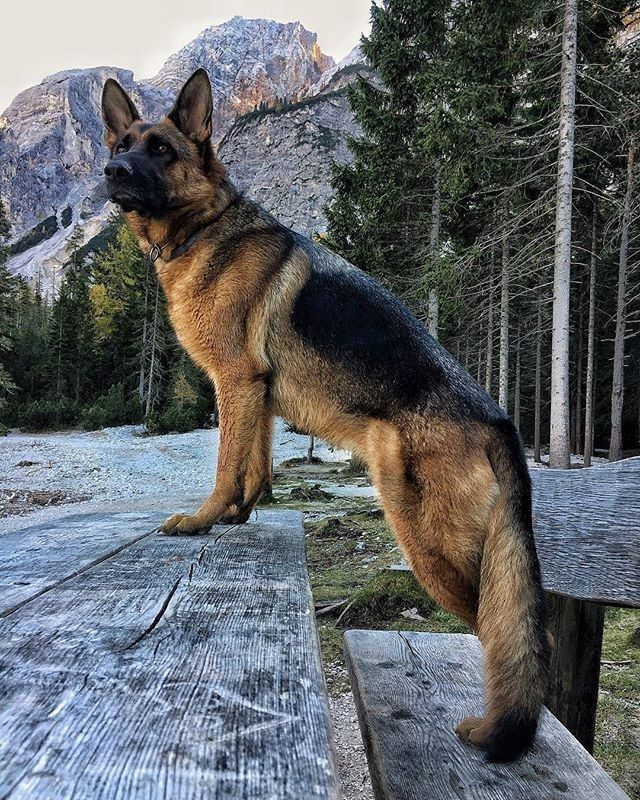
Relationships are often strained if you have two females living in your house. They begin to divide the territory and decide who is in charge. In this case, you need to constantly monitor their behavior.
Breeder Observations: My German Shepherd is very emotional and often offended by showing off to get what he wants. If they don’t want to play with her or she doesn’t like something, she purposefully leaves, lies down somewhere in the corner and will sigh very hard from her “hard life”.
German Shepherds are not very "talkative", barking only when guarded or at the command "Voice".
My German Shepherd is very feminine and graceful, loves to be photographed and poses with pleasure. You don't even need to fix it!
German Shepherds are easy to train, the main thing is to find an approach and take into account the character of a particular dog.
Breeder's recommendation: The German Shepherd must be socialized from an early age. Socialization includes communication with different people, walks, including in crowded places, contact with other animals.
In class, the German Shepherd is focused, not distracted by extraneous stimuli.
It is not difficult to motivate a German Shepherd, personally my dog is a pronounced player, he is still indifferent, but at the same time his concentration leaves much to be desired. She loves fetching, her favorite toys are ring, puller and doglike.
Breeder's recommendation: The best activities for a German Shepherd may be agility, sports training or the Russian ring.
The motto of a person who is raising a German Shepherd should be "Calm, only calm!", as Carlson said.
My German Shepherd is very picky about food, most of the time he doesn't eat enough food.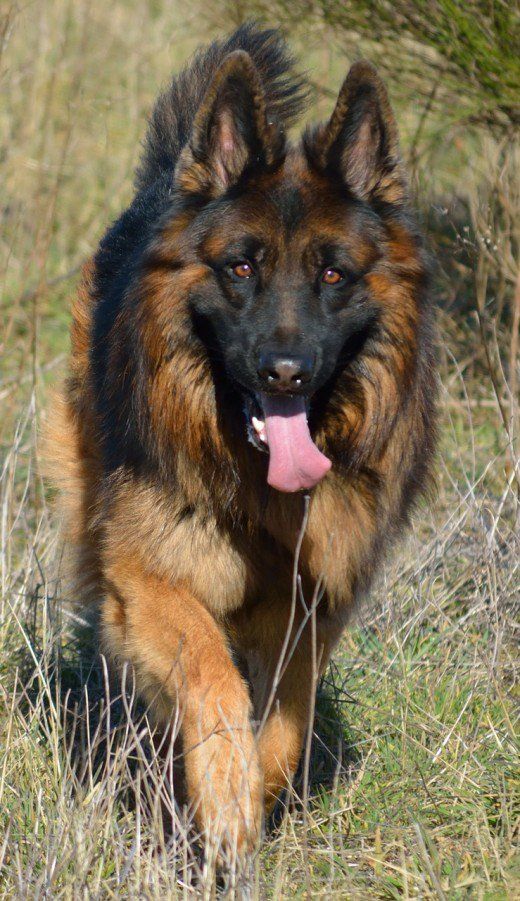 He eats little, and stretches the soldering for the whole day. But he loves fruits and vegetables very much, steals cucumbers from the garden or berries from the bushes. Very often you can find her around the corner, munching on a cucumber or an apple.
He eats little, and stretches the soldering for the whole day. But he loves fruits and vegetables very much, steals cucumbers from the garden or berries from the bushes. Very often you can find her around the corner, munching on a cucumber or an apple.
She does not pick up from the ground, she has been weaned since childhood.
Caring for a German Shepherd is not difficult. They need to be washed 1 time in 2 - 3 months and combed out.
Breeder's observations: My German Shepherd is very clean, bypasses puddles, and tries to choose dry places in slush. She loves to bathe and loves to swim. A trip to the river for her is the greatest happiness, it is impossible to pull her out of the water.
German Shepherds shed 2-3 times a year. If they live in a house, then they do not have a rich undercoat, and in this case, the outer hair is shed.
My German Shepherd is cold rather than warm. In cold weather, the energy overflows, and in the heat it is calm, often lying in the shade on damp ground.
In cold weather, the energy overflows, and in the heat it is calm, often lying in the shade on damp ground.
As a puppy, there were problems with accustoming the dog to cleanliness, but later I calculated his "need" hours and began to take him outside at this time. Then she realized that it was impossible to defecate at home. Now she's holding out until she's released.
The average lifespan of a German Shepherd is 10-13 years.
The most common German Shepherd diseases are cardiovascular diseases and hip dysplasia.
Congenital heart defects, twisted tails, missing teeth, hip dysplasia are disqualifying defects.
You can get a German Shepherd if you are willing to give it at least 2 hours a day.
If you are ready to "pull" such a dog financially, including spending money on a cynologist, veterinarian, and for participation in exhibitions - on a handler.